
COROS has just announced the newest version of its flagship adventure watch series: The COROS Vertix 2S. This iteration is a slight upgrade over the existing Vertix 2 that was announced three years ago in the summer of 2021, and aims to offer a few modest updates for prospective new buyers. Some of these upgrades are software-based, and are coming to existing Vertix owners (per Tuesday’s software announcements). While some of the updates are minor tweaks to the hardware to ensure it has top-dog status over the existing COROS APEX 2 Pro & Pace 3 unit, given those newer units received hardware improvements since the original Vertix 2 release.
I’ve been putting the Vertix 2S through its paces over the last bit, across a host of sports from swim to bike to run to hike, and everything in between. I’ve thrown down some solid hours and mileage, especially over the last two weeks, to see if these improvements are worth the upgrade – and ultimately, how they fare compared to a number of COROS’s key competitors.
As usual, this watch is a media loaner, and it’ll go back to COROS. After which I’ll go out and get my own for any future testing needs. If you found this review useful, you can use the links at the bottom, or consider becoming a DCR Supporter which makes the site ad-free, while also getting access to a mostly weekly video series behind the scenes of the DCR Cave. And of course, it makes you awesome.
With that, let’s get into it!
(Side note: For those waiting for the final Polar Grit X2 In-Depth Review, you’ll see that in the next couple of days. I ended up holding that back, since so many of these COROS Vertix 2S data sets were done with the Polar Grit X2 on the opposite wrist. I figured I might as well show you how they compare from an accuracy standpoint, given they’re only a few weeks apart. Of course, you’ll see most of those data sets here in this post, which will also appear in the Polar Grit X2 Pro review, in addition to countless more data sets. You can also get a preview of that review within the most recent FIT File Podcast episode here.)
What’s New:
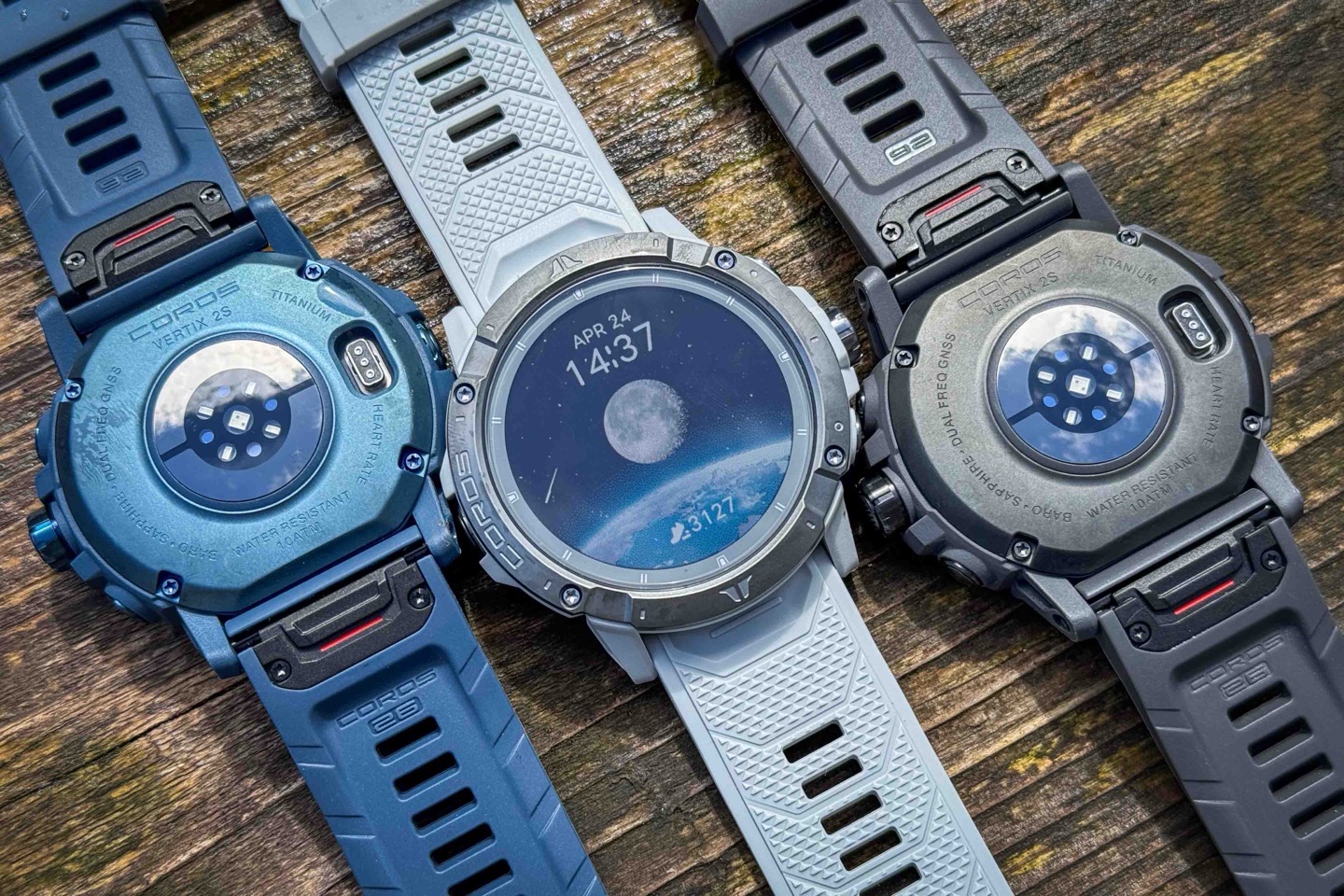
As noted in the intro, this isn’t a major update of the hardware or software within the Vertix 2S. Like some of their competitors, this is mostly a very minor upgrade to the hardware components. Some of it is to ensure COROS’s top-end unit retains COROS’s best optical heart rate sensor and GPS performance, while other hardware tweaks are related to component/chipset upgrades from a manufacturing standpoint. That said, not all things are actually spec increases – there is one spec decrease here.
With that, here’s the quick-hit list:
– Switched to the latest COROS optical heart rate sensor (same as in Pace 3 & APEX 2 Pro series)
– Tweaked GPS antenna slightly for improvements in GPS performance/accuracy
– Now offered in three different model colors (Space, Earth, Moon)
– Includes both silicone and nylon strap (previously just silicone)
– Shaved 2g off the weight, from 89g to 87g (silicon) to 72g to 70g (nylon)
– Increased the thickness slightly due to newer optical heart rate sensor bump (15.7mm to 16.0mm)
– Decreased battery life claim from 140hrs to 118hrs, due to newer optical HR sensor
– Switched to a fully recyclable yet still usable carrying case (more on that down below)
– The same ~50mm watch case size, same 1.4” MIP-based display with 280x280px
– The price remains the same at $699USD.
As you can see, the newish optical heart rate sensor actually plays into a lot of these changes. It burns more battery (but is more accurate than the existing Vertix 2 sensor), and is also a bit thicker, causing an increase in thickness. Yet, the overall package is slightly lighter.
Beyond that, COROS spent time tweaking the antenna on the Vertix 2S. If you’re a regular reader here, you know that while COROS was the first of the endurance sports watches to adopt multi-band/dual-frequency tech – that didn’t actually translate well to greater accuracy than their competitors. In most modern GPS smartwatches, they all share the same exact GPS chipset. Instead, it’s actually the antenna design that tends to play the biggest role in GPS accuracy (or inaccuracy). The differences are often just fractions of a millimeter in placement that decide whether or not a unit reigns supreme, or sucks. COROS made very obvious improvements in the Pace 3, and those learnings are carried to the Vertix 2S.
There are officially three different color variants, as seen below, all three coming with both nylon (soft) and silicone straps.
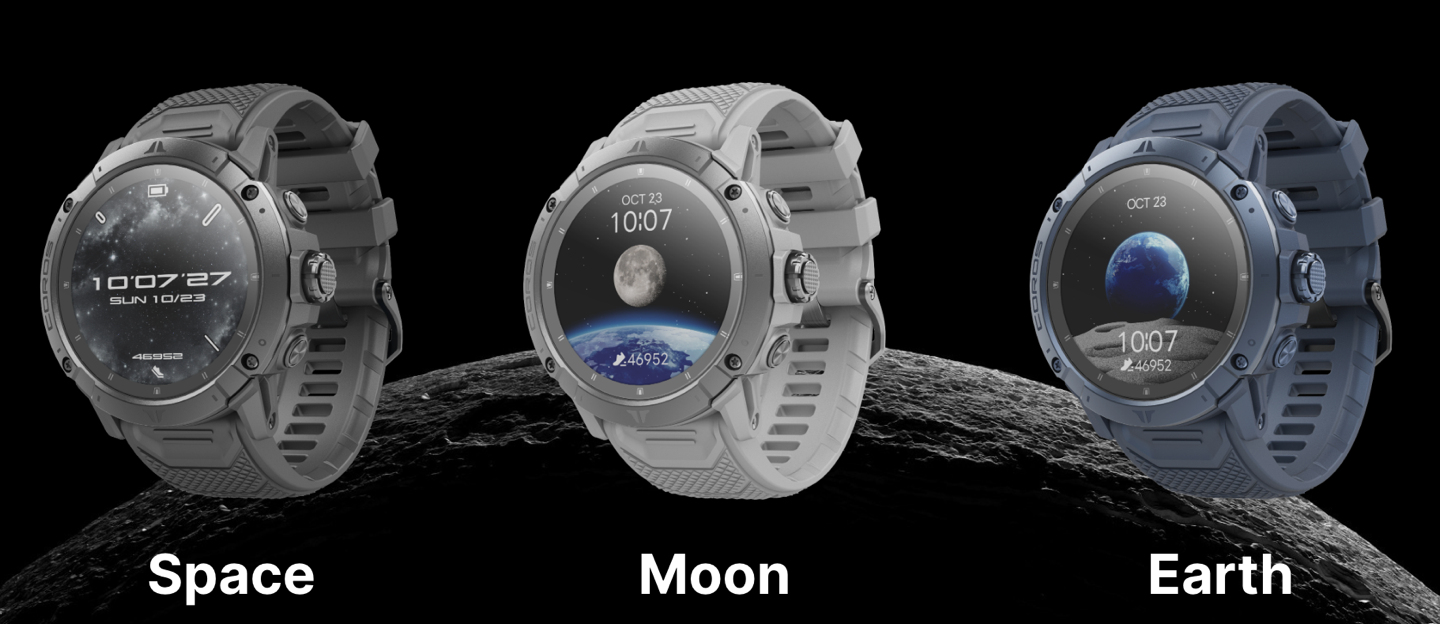 In addition, remember that both the existing COROS Vertix 2 & the new COROS Vertix 2S also get these firmware updates announced two days ago:
In addition, remember that both the existing COROS Vertix 2 & the new COROS Vertix 2S also get these firmware updates announced two days ago:
– Adding screen mirroring of watch to phone (both for data fields, and navigation)
– Adding Virtual Pacer feature (set a specific target pace/distance, and it’ll keep you on track)
– Added new Climbing (e.g. rock climbing) GPS track accuracy optimizations (note: APEX 2 Pro, Vertix 2 only)
– Added new FTP test (Functional Threshold Power) for cycling
– Redesigned workout/activity screens
– Added ability to do both a structured workout and navigation for running sports
– Added ability to create climbing (e.g. rock climbing) workouts on app
– Added climbing training plans
– Added more bouldering grades (UIAA/Ewbank/Australian) – Note, not for Pace watches
– Made changes to recovery time algorithm to be less crazy
– Now supports Strava notes on sync of Running Form & Fitness tests, and Bike/Indoor Bike
– Structured swim workouts increased interval granularity to 5m
Got all that? Good. Let’s get it all unboxed.
In the Box:
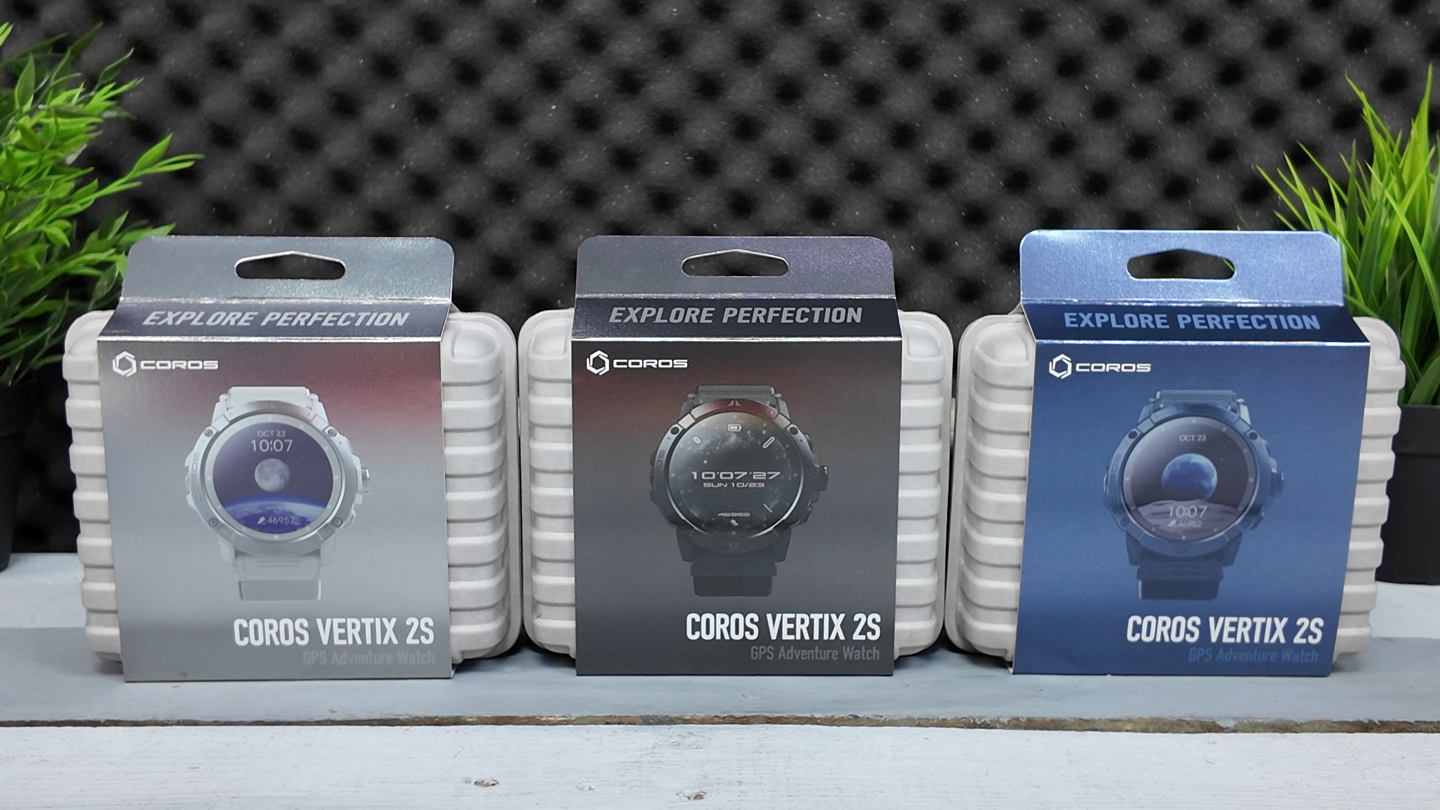
I’ll be the first to give COROS credit here for listening. Not just to my feedback, but many others as well. The existing COROS Vertix 1 & 2 units included a hardshell case of varying sizes. The Vertix 1 case was stupid big, though, as COROS noted, it could hold 3 beers for your long-course trail runs. But in most eyes, it was a huge waste. The Vertix 2 improved that by significantly reducing the case size. This new case could no longer hold beers, but could hold an M&M bag. I saw that as an improvement, though, I honestly still didn’t understand why I needed a case for a watch (just like I don’t get it on Garmin’s MARQ series).
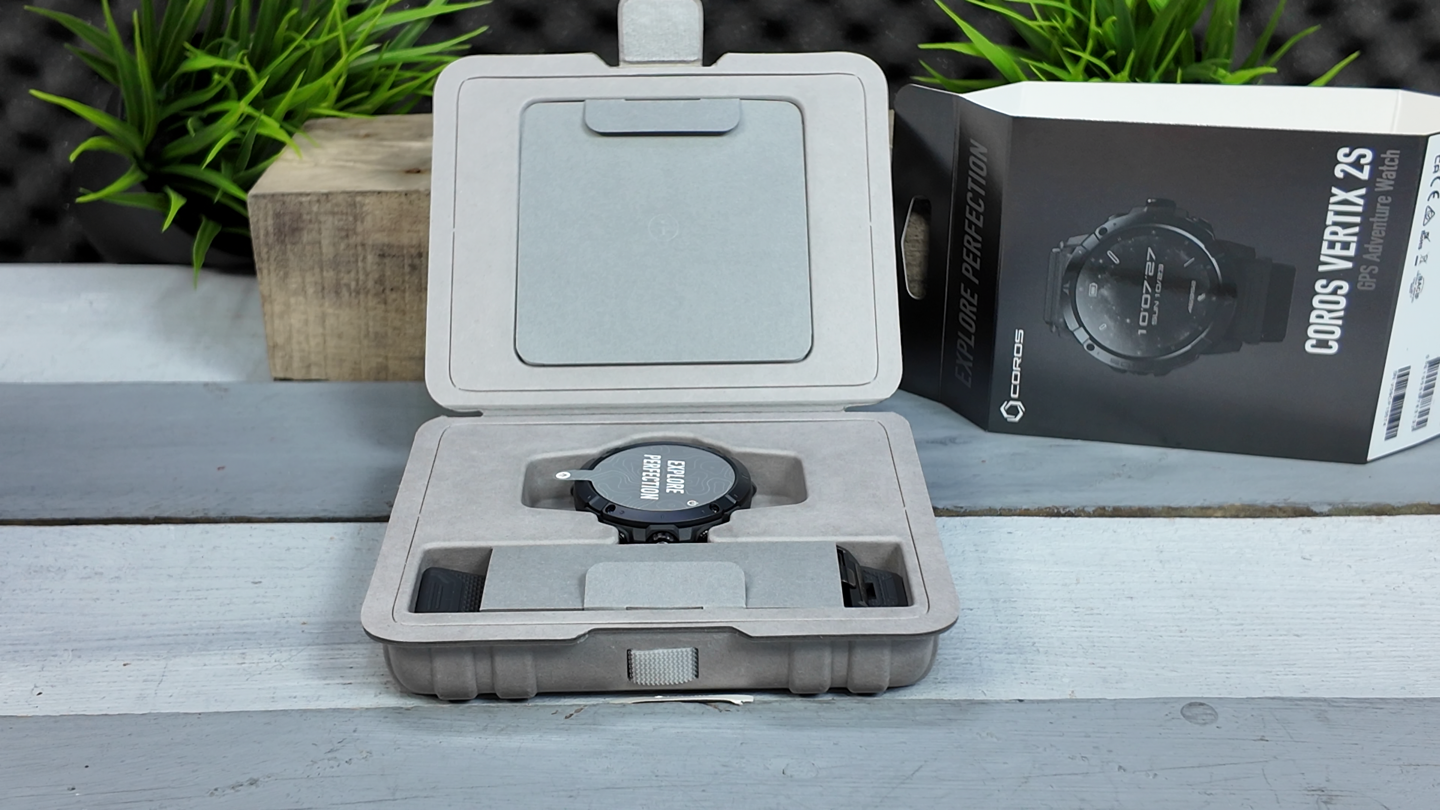
COROS says they’ve listened though, to both the practical and environmental feedback. The new packaging is part reusable case, but also totally recyclable. Not only that, the entire packaging is made from recycled materials to begin with (which typically cost more). Once you’ve cracked open the case, you’ll see it has a tiny little bit of velcro on it, in the event you want to retain it for holding M&M’s. It’s good for that.
Once you’ve done the unboxing thing, you’ll find yourself the watch pod, the bands (each color has a different color band), and then the charging cable. Of course, there’s also some paper stuff too. You’re probably not gonna need that after getting up to speed in this review.

Here’s a closer look at the watch, the back plate:
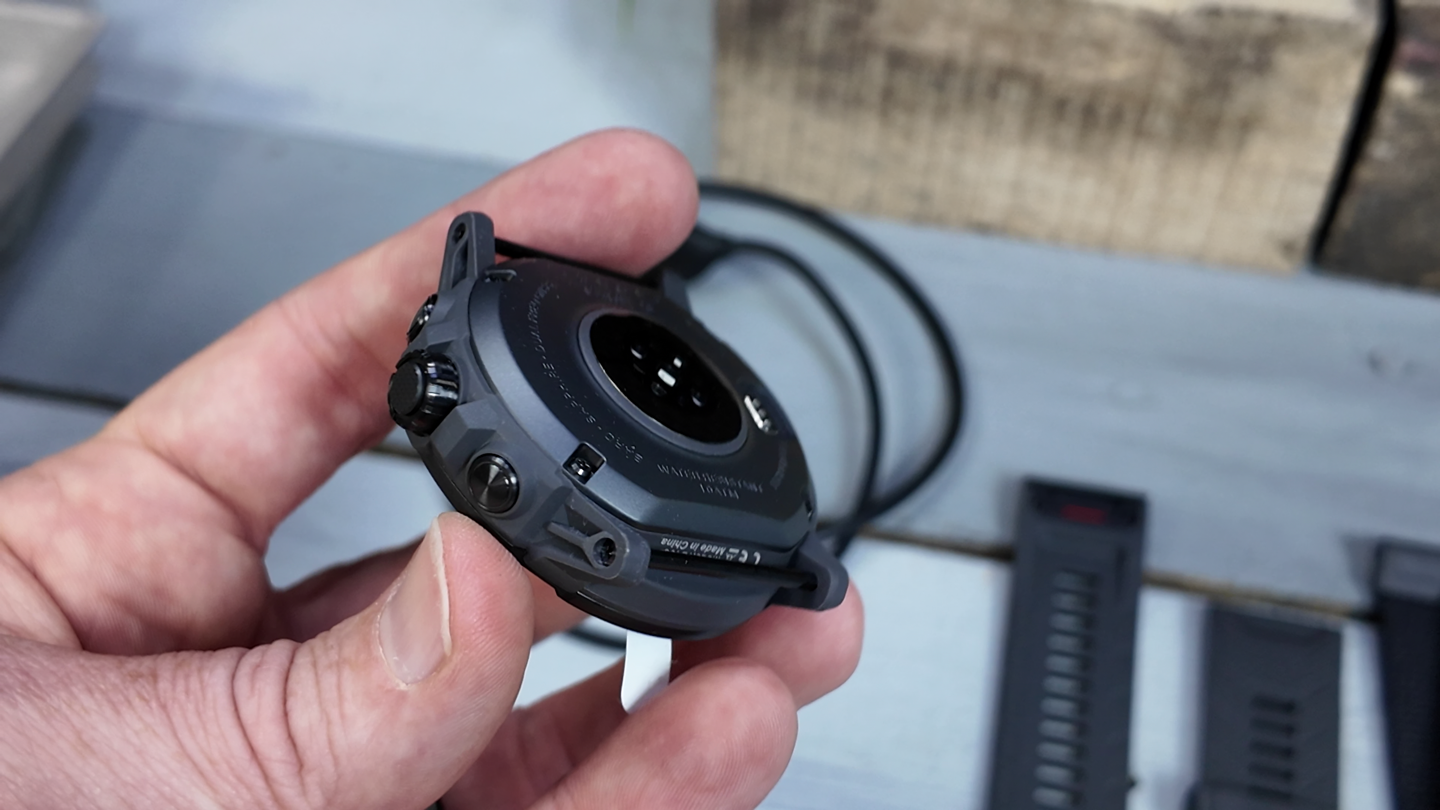
It retains the same COROS charging cable as the previous one. I’m a tiny bit surprised we didn’t see COROS switch over to a USB-C version of their cable, but I don’t think it’s a huge deal.
And then you’ve got the two included straps, nylon and silicone:
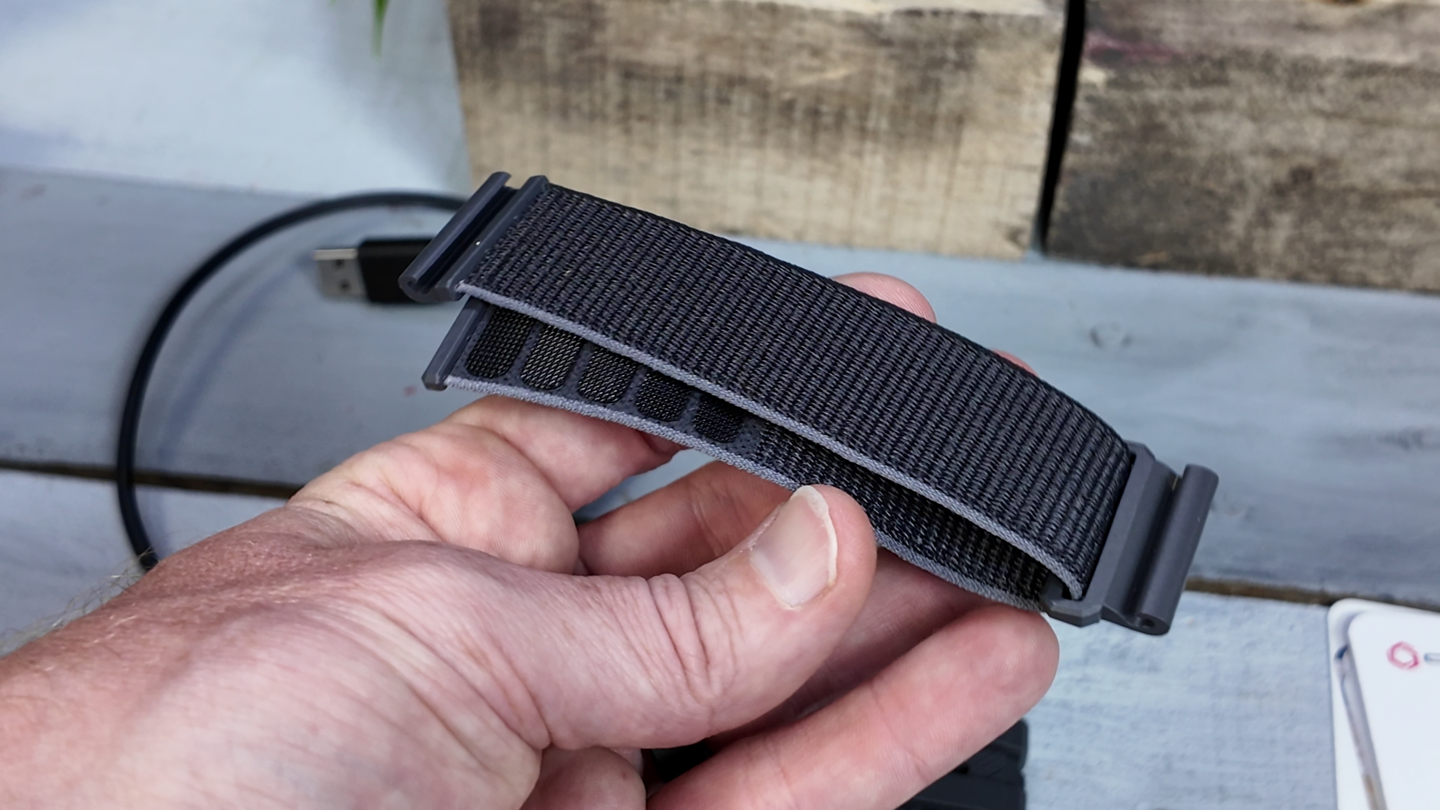
And the silicone strap:
![]()
Now, with everything unboxed, let’s start using it.
The Basics:
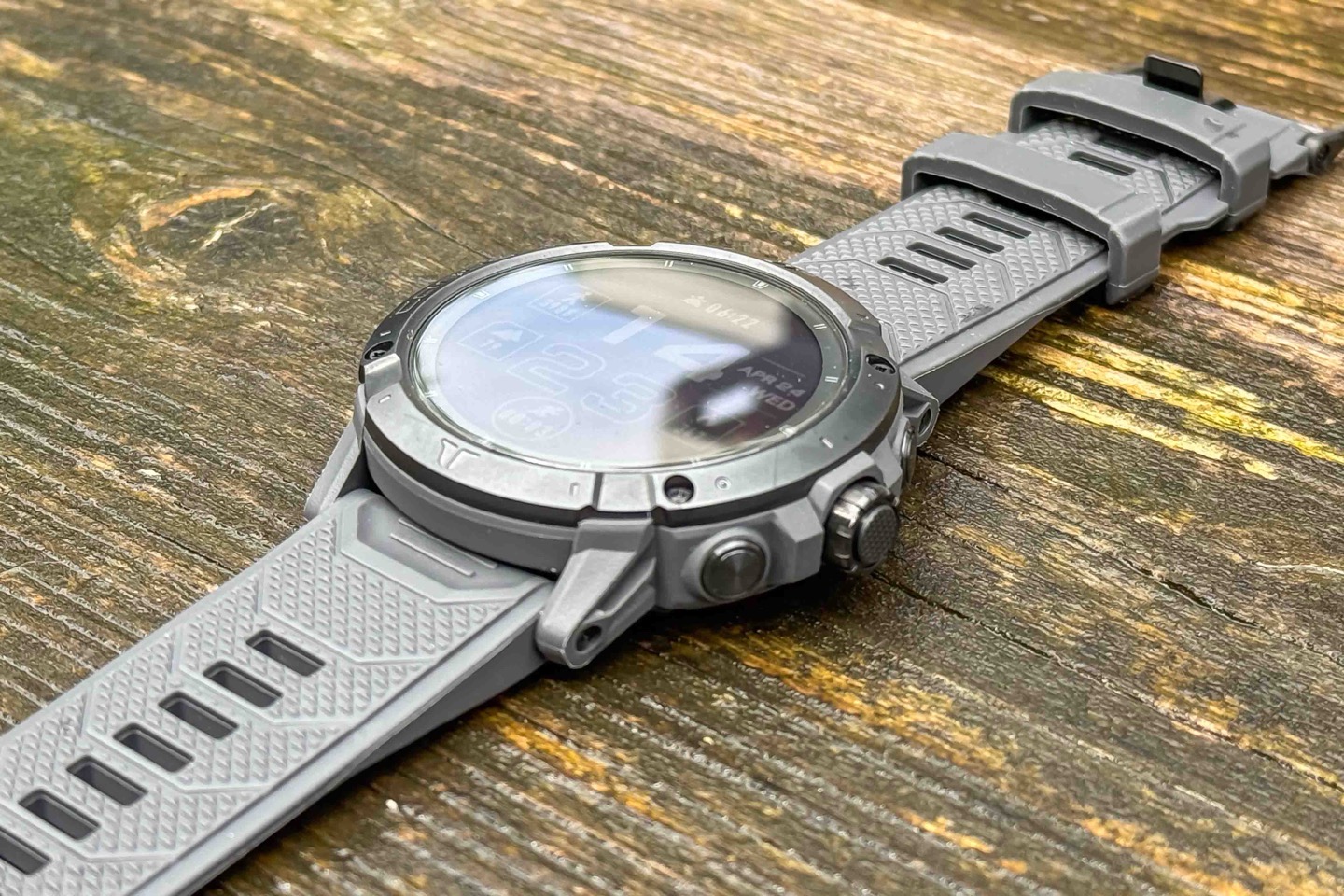
This section will focus on the watch basics and daily usage components. For all the sports aspects, you’ll find those in the next section.
Starting off with the interface, the watch has three buttons along the right side, one of which is a rotating Digital Crown. Further, the display is also a touch-based display, which you can leverage as you see fit (or not, if you don’t want to).
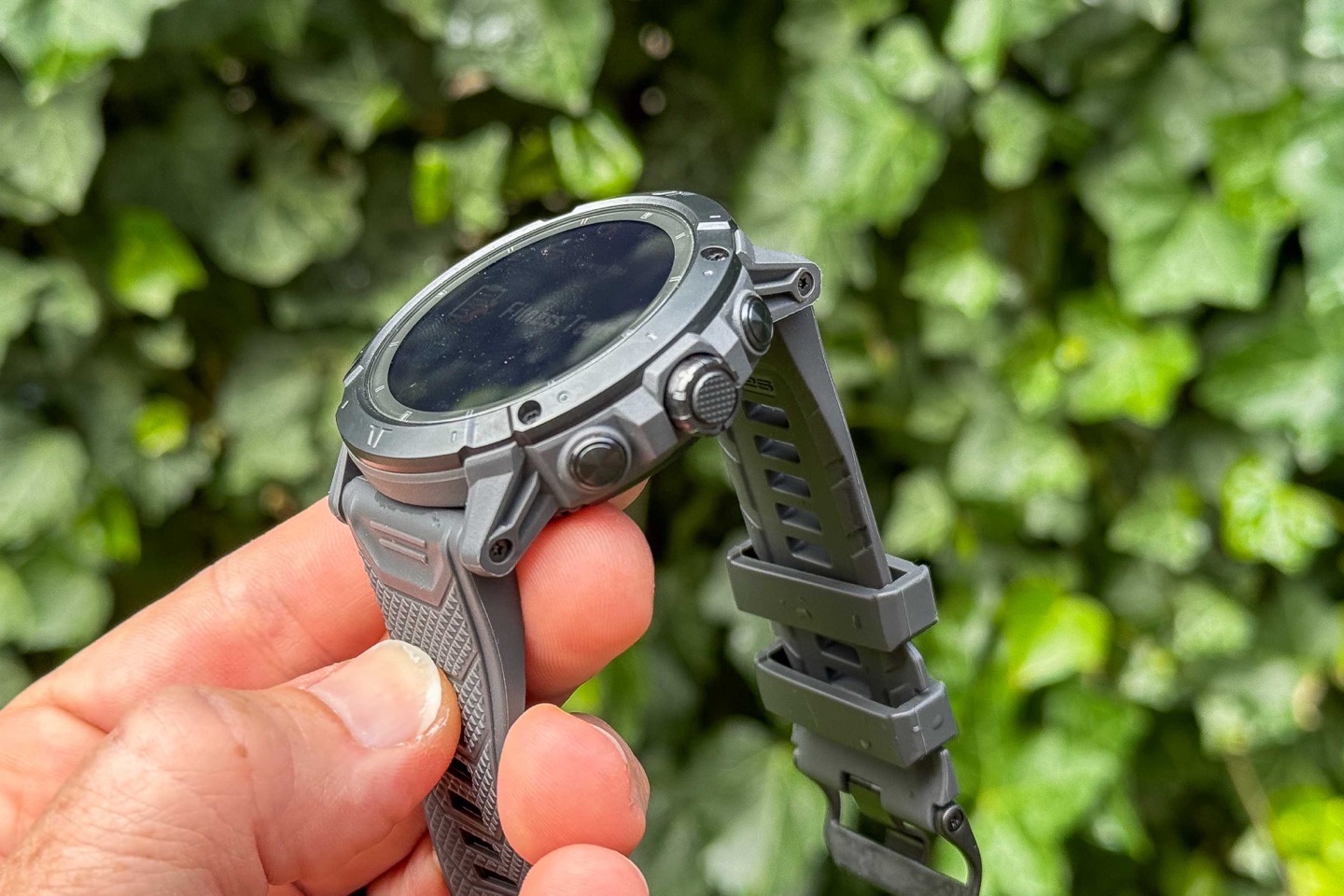
The display keeps the same MIP (Memory In Pixel) display from the previous COROS Vertix 2. While many thought we might see COROS adopt an AMOLED display, I’d wager a guess that that’ll wait to a product that’s not effectively a mid-cycle placeholder unit (again, hence the name 2S). COROS has done surveys asking about it, and unquestionably they know that’s the direction the market has gone, and where the majority of demand is.
Nonetheless, this means that the display is always-on, but does have a backlight that can be used to better illuminate it in darker conditions. But it effectively lacks any sort of flashlight-type mode that other AMOLED-equipped watches have.
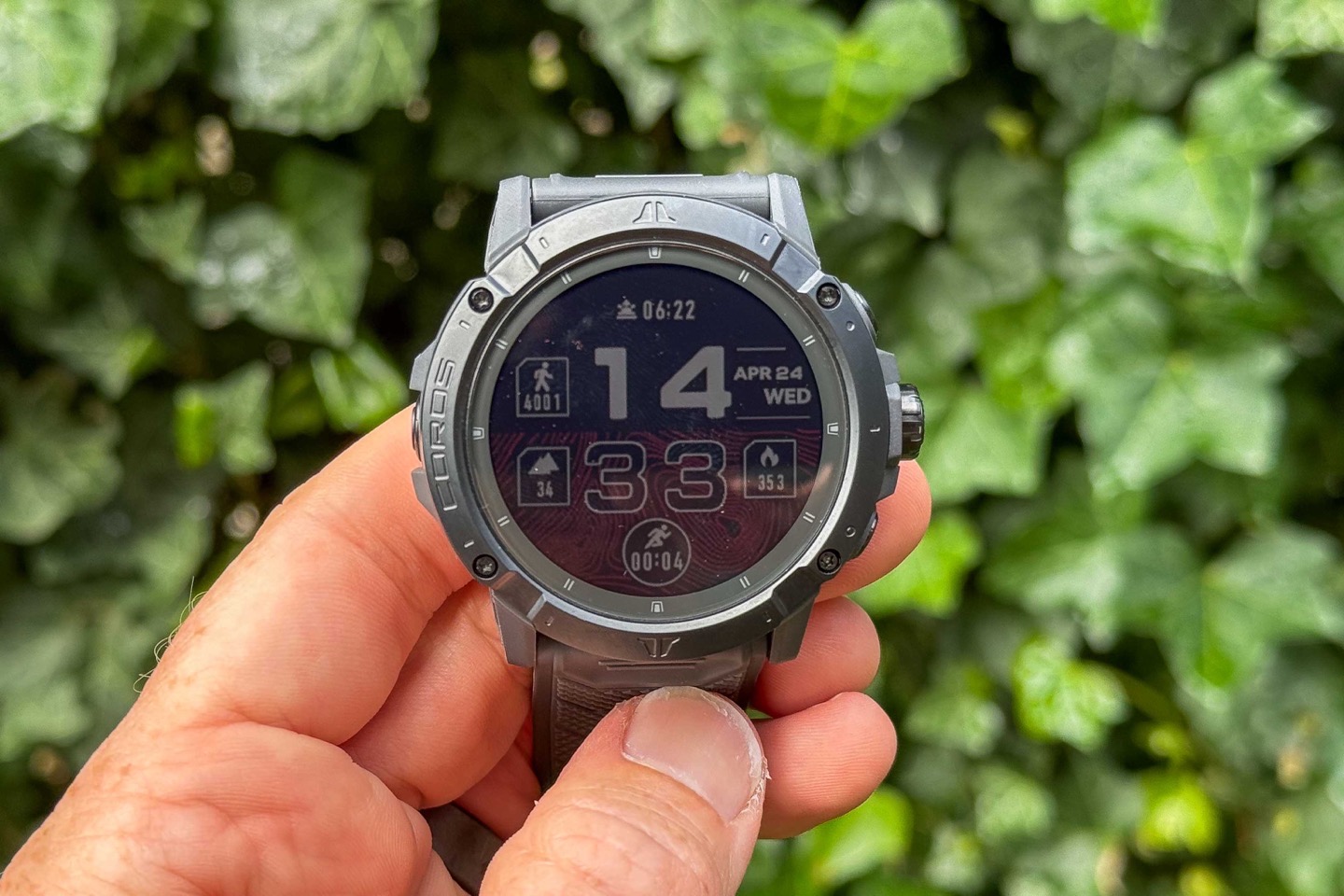
Now, each of the three iterations have a custom watch face for them (Space/Moon/Earth). But, you can of course change that watch face to anything else custom, as well as other ones COROS has created. They’ve got a pile of watch faces to choose from, including various event-driven faces. You can also customize the formatting of the data on the display.
Once you rotate the digital crown down, it’ll unlock the watch (by default), and then you’ll see the widgets. First up is your daily activity totals:
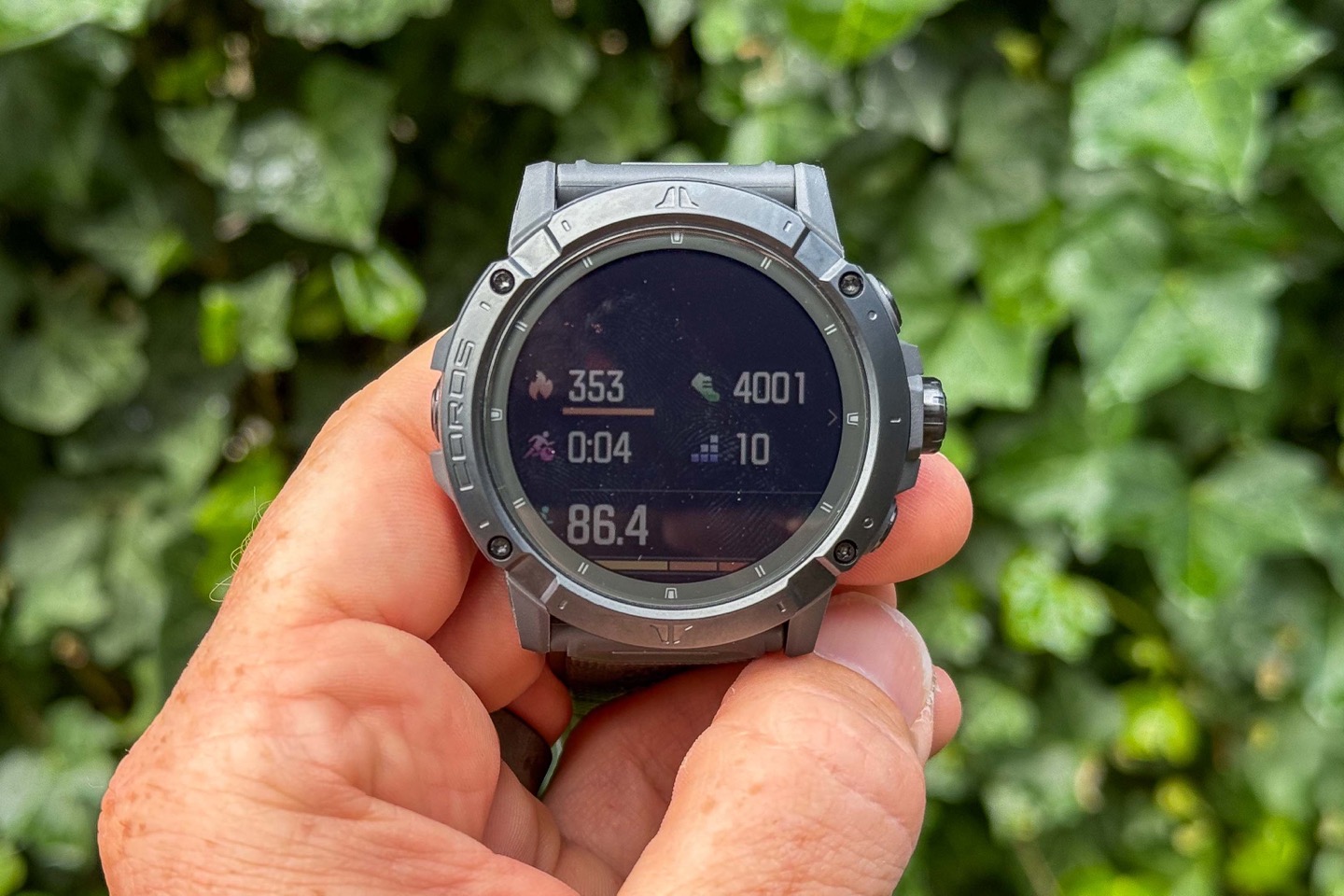
You can open this up for deeper stats on things like steps and calories. Or, you can keep scrolling for a slate of other metrics. This includes, for example, your sleep metrics:

In my testing, the COROS Vertix 2S seems to track my fall-asleep & wake-up times just fine. I don’t focus on the accuracy of the sleep phase/stage components, as the data options to compare that simply aren’t that accurate to begin with. Still, COROS does seem to get the key pieces I want correct (how long I slept).
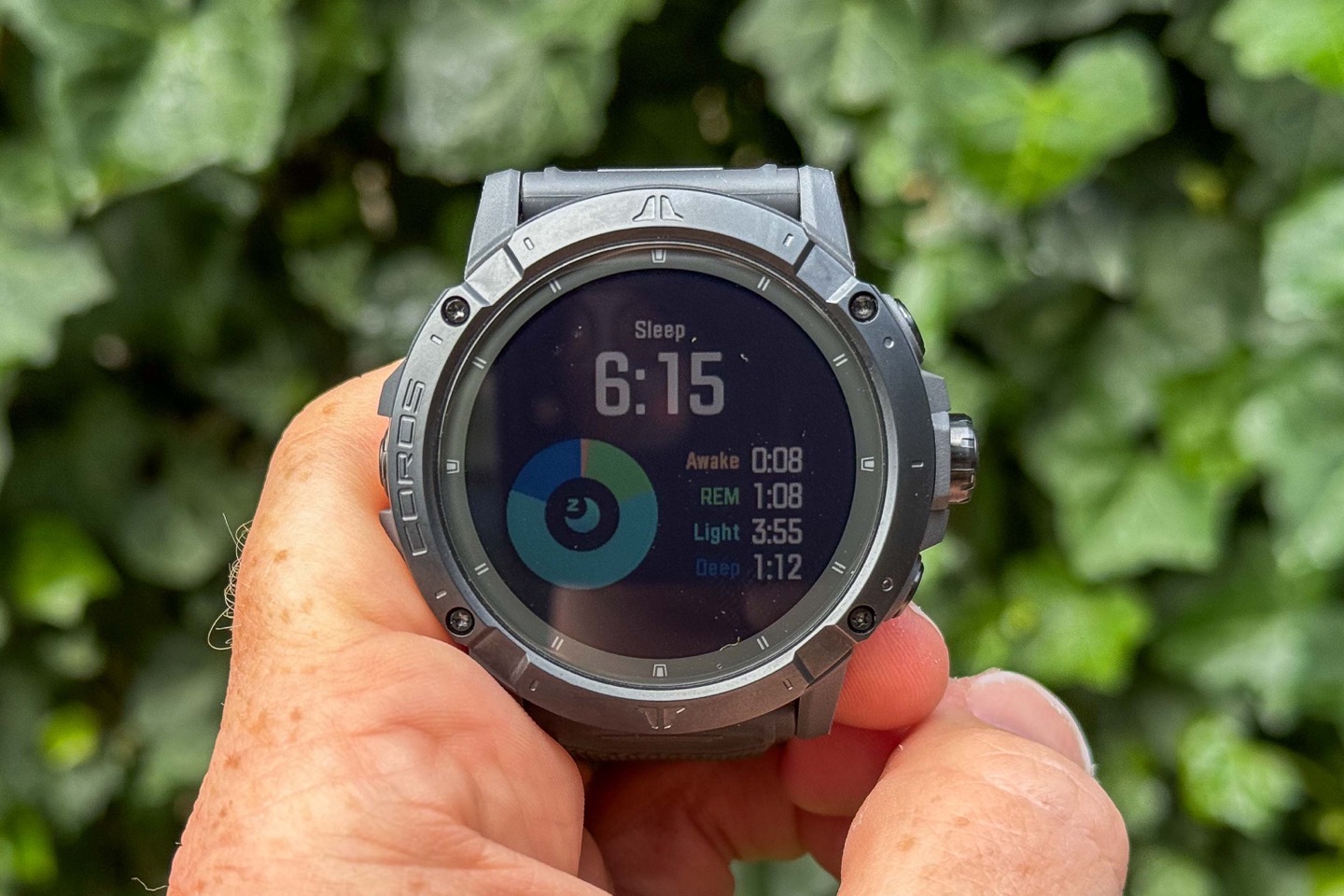
Likewise, since late last year, COROS has rolled out HRV tracking (heart rate variability), which tracks your HRV values at night automatically, and then shows how they trend compared to your baseline.
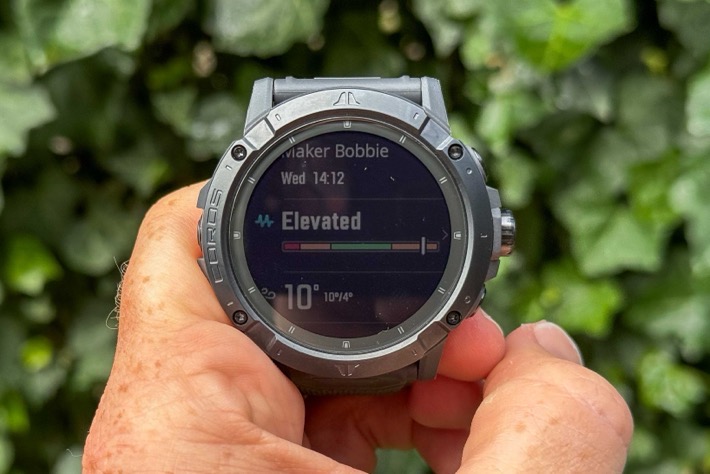
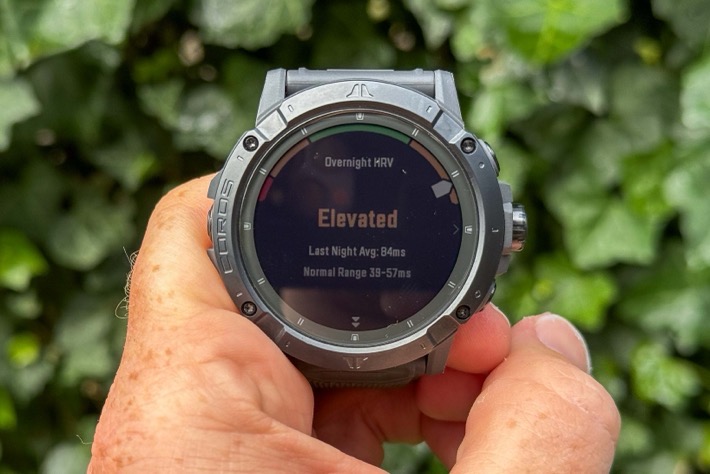
In addition, on the various widgets, you’ve got other data metrics like sunrise/sunset times, barometric pressure, heart rate, and stress.
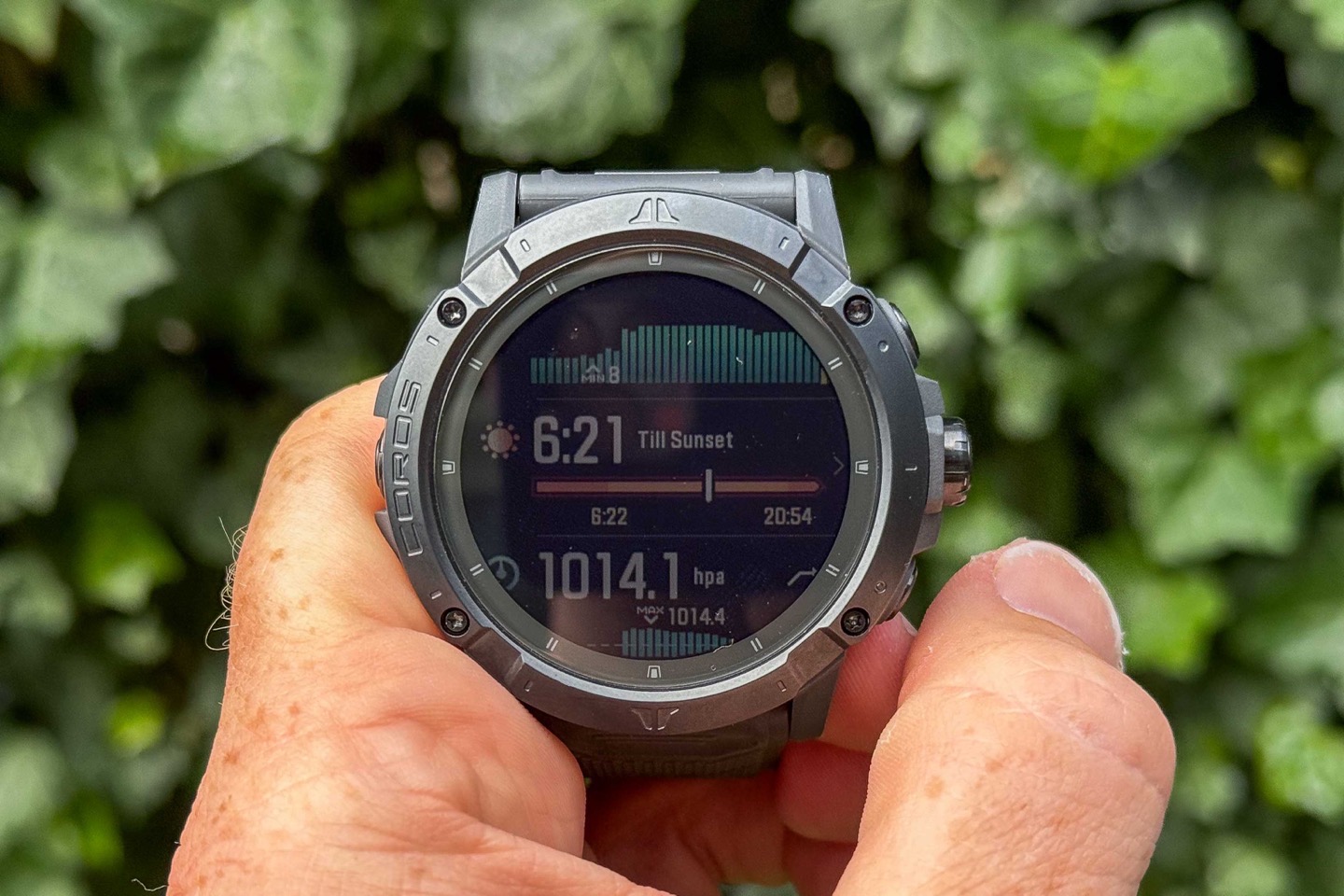
For metrics such as heart rate tracking, HRV status, and stress, these will all be coming from the optical heart rate sensor found on the back of the watch. This sensor operates 24×7, but has different power modes depending on whether it’s tracking a workout or just daily life. A workout requires higher power consumption in order to be more accurate. This is COROS’s newer sensor, used in other recently released watches including the COROS Pace 3.
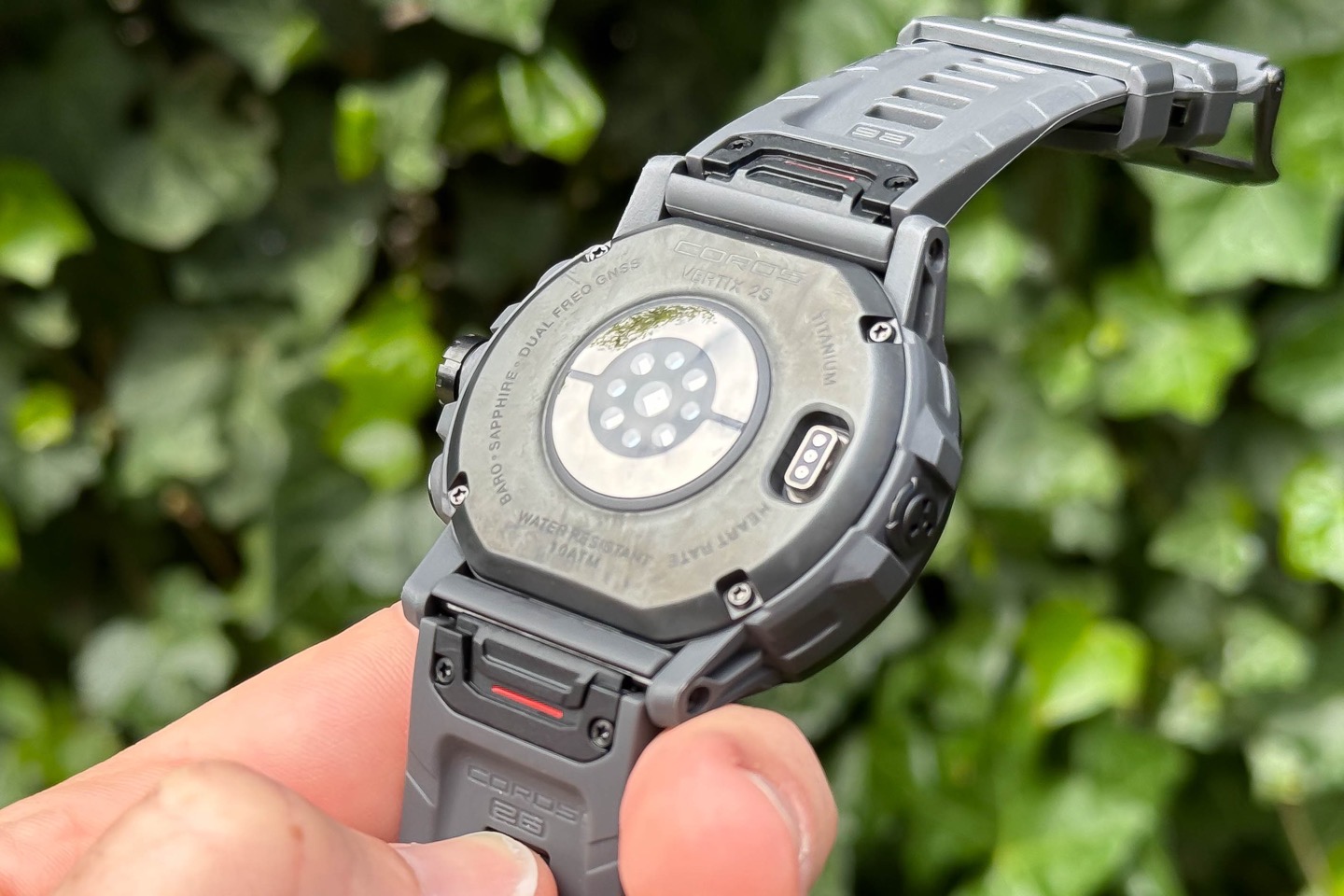
Also on the back is the standard COROS charging port, there are no changes there.
Now all of this data is shown both on the watch, but also synced continuously with the COROS app. I’ve had good luck in that sync process being very fluid and constant, without requiring me to keep poking it. Any of the metrics can be dug into for further information on a daily/weekly/monthly basis.
Finally, you can see your smartphone notifications on the watch. I will say that the rendering of some before you tap to open doesn’t quite seem as good as other watch companies. I don’t really understand why, but they often seem truncated in weird ways compared to how they render at the exact same moment on Polar/Garmin/etc watches. I think COROS could spend a bit of time on this user interface to make it cleaner.
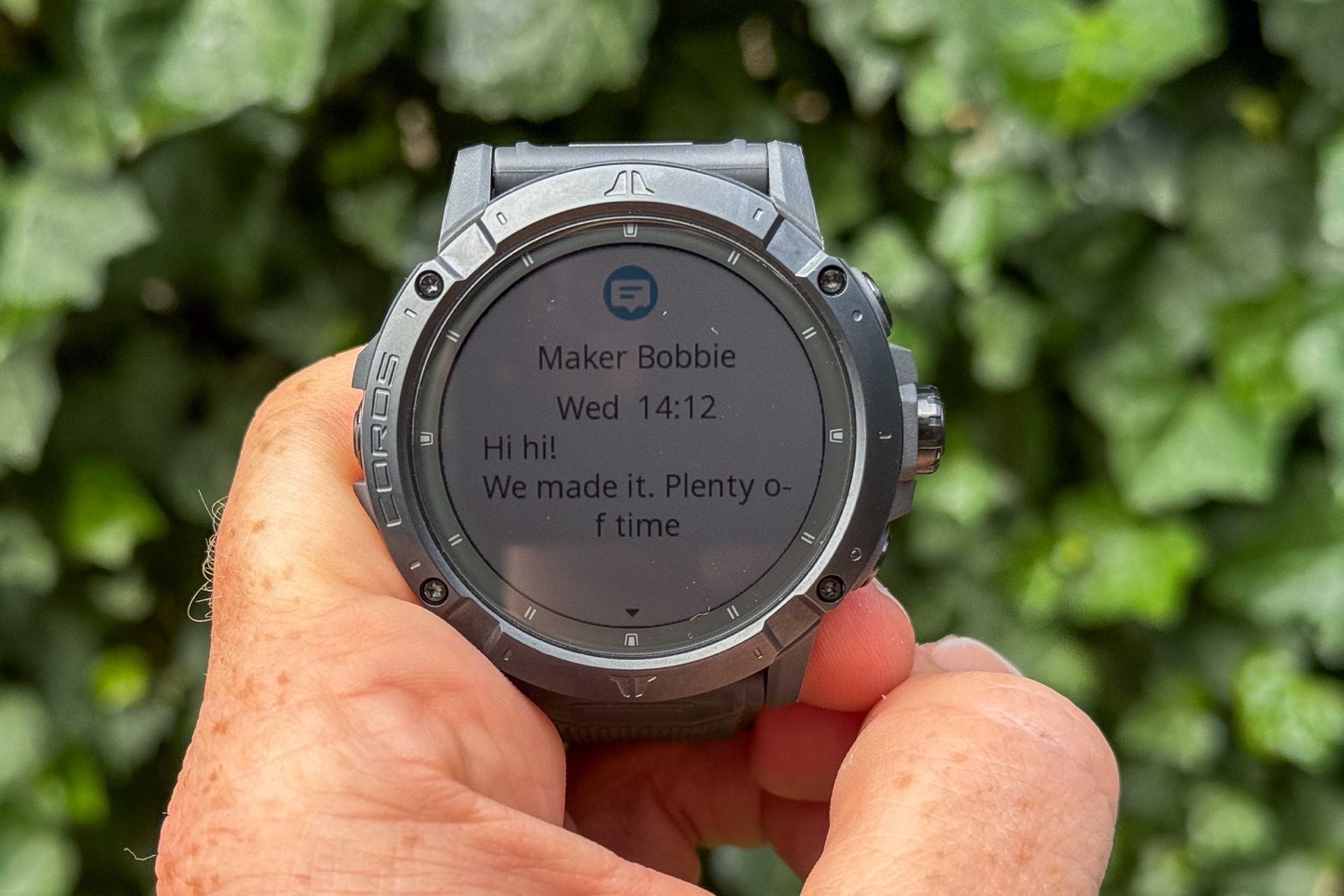
Finally, from a battery life standpoint, it’s somewhat tough to figure out 24×7 battery usage, since I’ve got tons of GPS workouts mixed in there. But the general trending of the GPS battery times seems to align with their specs, and then concurrently the daily reduction of the battery otherwise seems to be consistent with what I’d expect given the battery claims posted.
With that, let’s dive into the workout tracking pieces.
Sports & Workout Tracking:
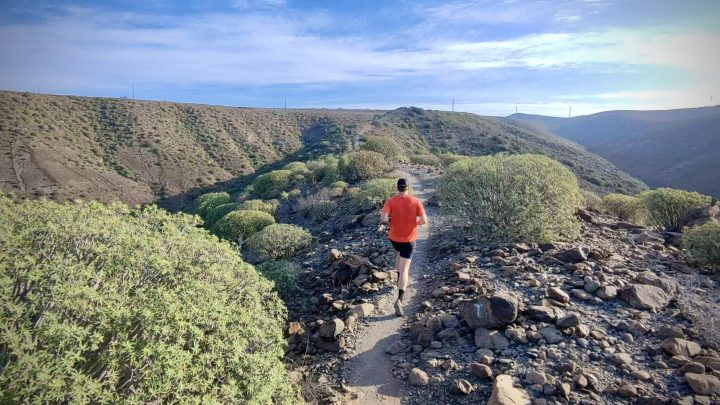
Undoubtedly, if you’re buying a COROS watch, it’s to track some form of sports activity. These days, COROS covers the vast majority of sport modes/profiles that you’d find on most watches. That includes all of the most common ones like running, cycling, and swimming – but also some more unique ones, like a significant push into rock climbing related activities. While other companies do have rock climbing features, COROS has really doubled down on that area in recent years (and even in updates this past week).
When it comes to these profiles, you can customize them via the COROS app, which lets you choose how many data fields per page, and which data fields you want. You can do this on a per sport profile basis, thus having different fields (logically) for running than cycling or swimming:
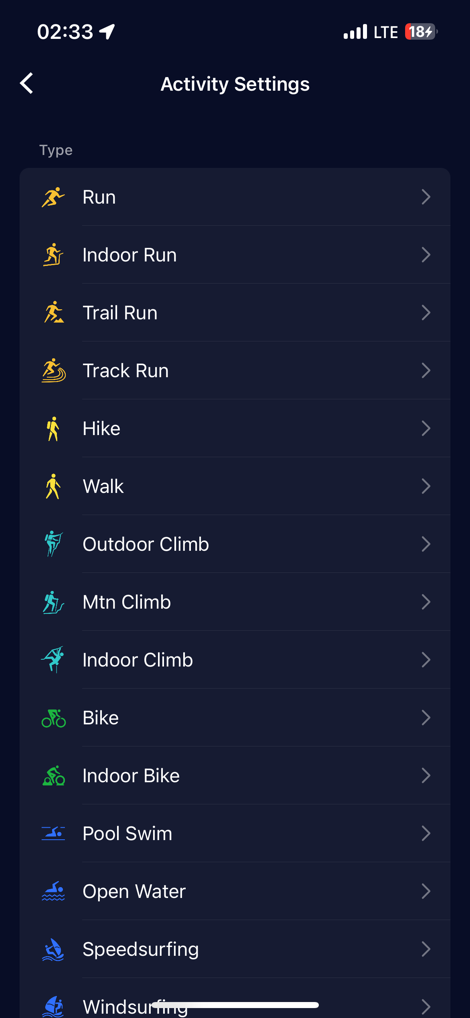
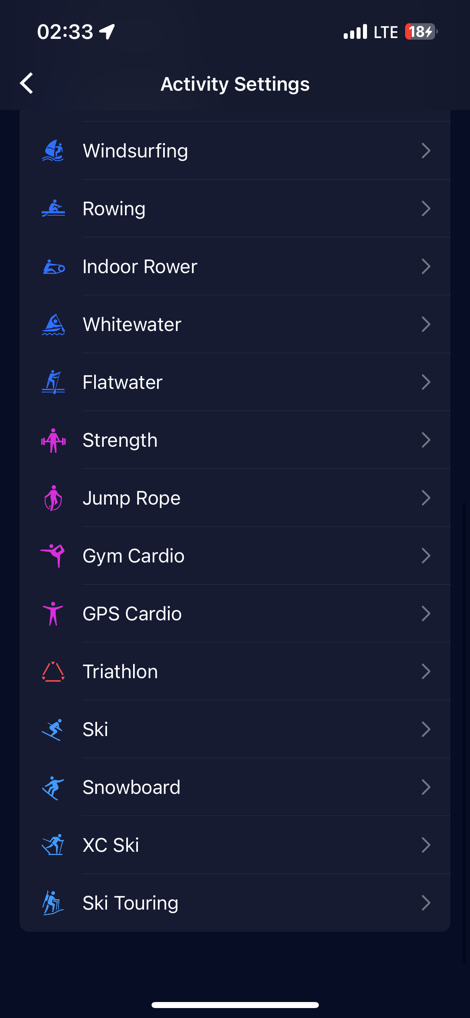

Above are all the current sport profiles, though you can create your own sport profiles (a custom profile), and COROS frequently adds new profiles – usually a few per year, at a minimum.
To start a workout, you’ll tap the Digital Crown, which brings up the sport menu listing, starting with the most recent sport profile you’ve done. You can use the Digital Crown to iterate up/down the listing to find the sport mode you’re looking for.

This is also where you’ll find Training Plans and Fitness Tests, as well as standalone structured workouts you’ve created and historical workouts.
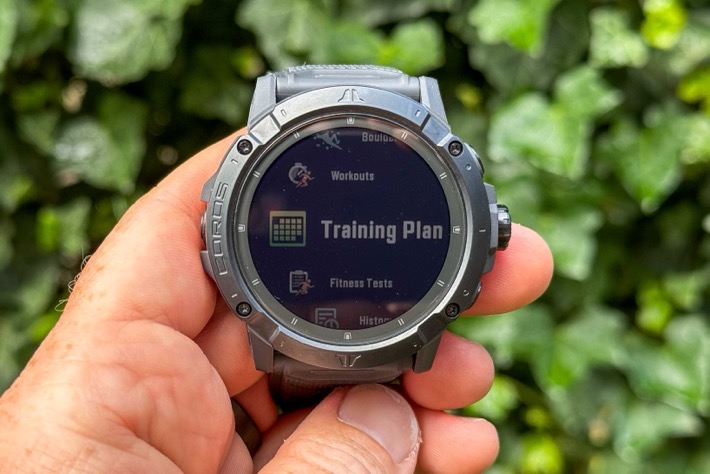
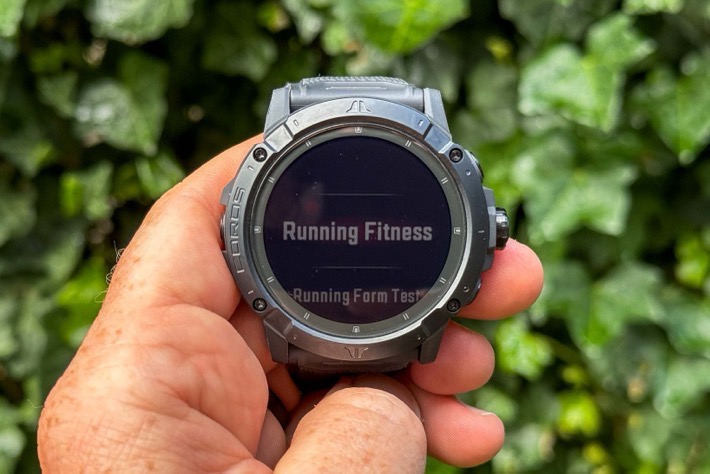
When it comes to those training plans, you can create your own, or have it push structured workouts from providers like TrainingPeaks. These workouts will show up automatically on your watch, according to your calendar.
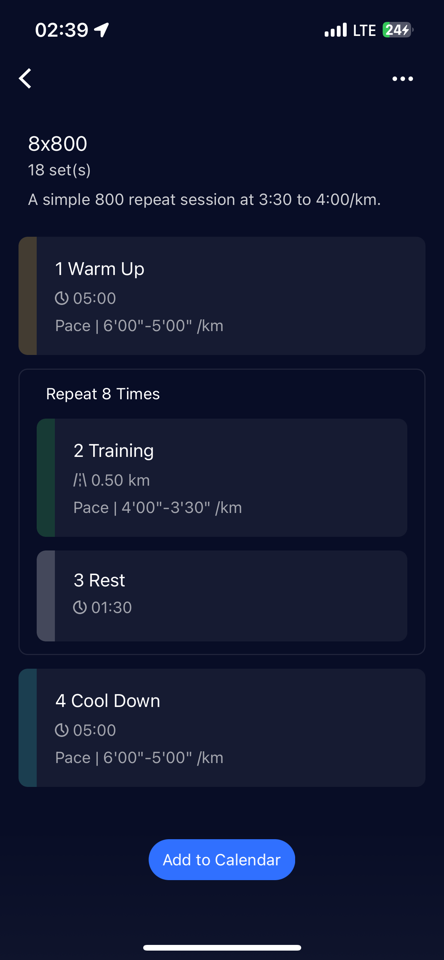
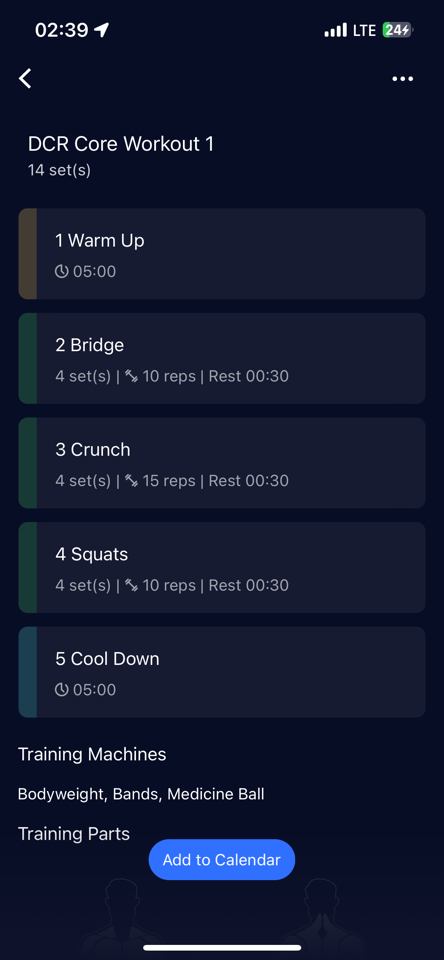
Likewise, you can create individual structured workouts for a number of sport types. This is basically akin to creating a more complex interval workout, where you’d specify exact targets for each phase/stage/portion of the workout.
With all that settled, it’s time to get the workout started. Back on the sport pending screen, it’ll be waiting for GPS acquisition and heart rate acquisition. I’ve found GPS acquisition pretty darn quick, though sometimes heart rate acquisition takes a few seconds longer than most of their competitors. This seems to be tied to the new sensor. Either way, it’s hardly a big deal.
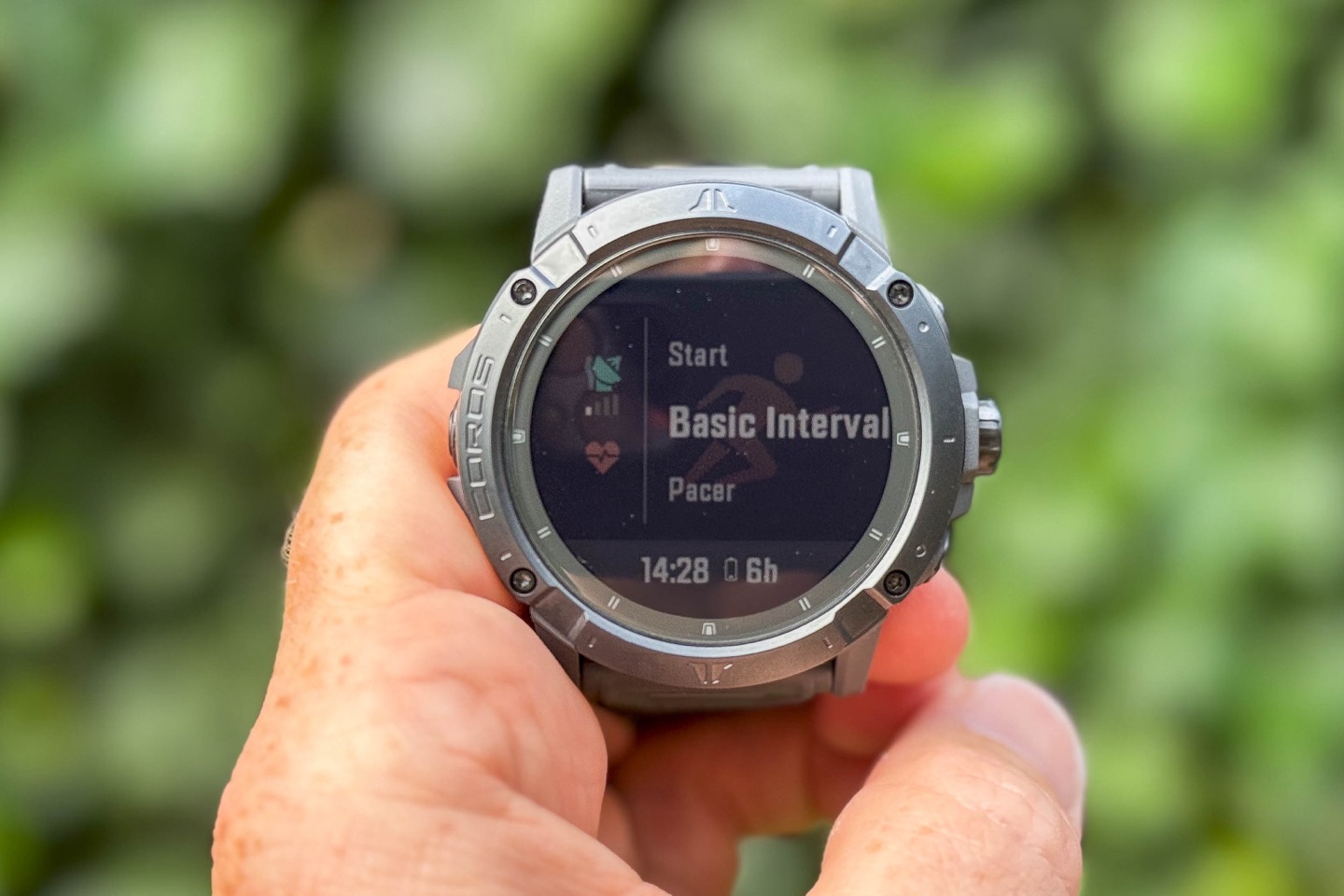
This is also the same page where you can add in a course/route to navigate, as well as configure other settings such as the new ‘Pacer’ feature (which lets you specify an exact time and desired distance to get a specific pace page). Further, you can configure Distance Alerts, Pace Alerts, Cadence Alerts, Heart Rate Alerts, Nutrition Alerts, and Power Alerts. Oh, and turn on/off Auto Pause.

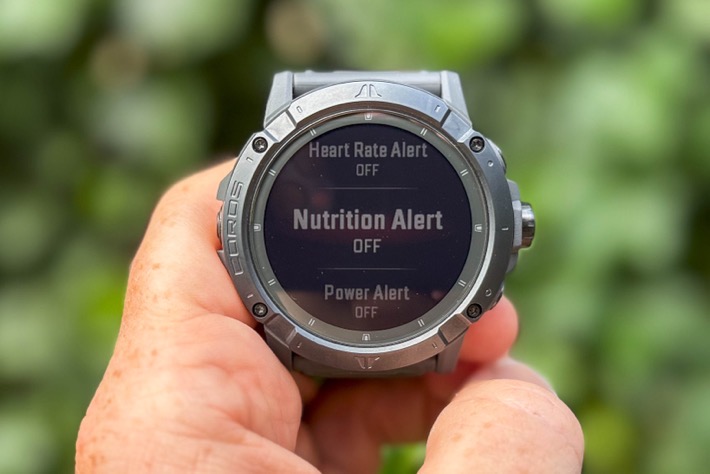
For realz now, let’s get this (trail) run started. Once you’ve begun, you’ll see your data pages as you’ve configured them. This page has actually changed just in the past week with the latest firmware, which now has a new layout that gets rid of the grid lines between the fields. Further, they also get rid of the labels after 5 seconds, making it a bit easier to focus on the numbers, here’s how it looks before (left) and after (right) that 5 seconds.


While doing whatever sport it is that you’re doing, you can use the Digital Crown to iterate through the different data pages you’ve configured. Likewise, you tap the Digital Crown to pause the workout. And you can hold the lower right button to access settings.
- Starting screen mirroring (upper left)
- While riding outdoors default view
- Changed zoom level
- Indoor data page options
- Indoor data page view
One of the settings you can access is the new Screen Mirroring feature. That allows you to leverage your phone to see map details that might be tricky to see on your watch. For example, it shows road names/labels and everything else (which isn’t shown on the watch). Here’s a horrific mash-up I’ve put together showing this while riding down the street. I’ll try and make a prettier one soon.
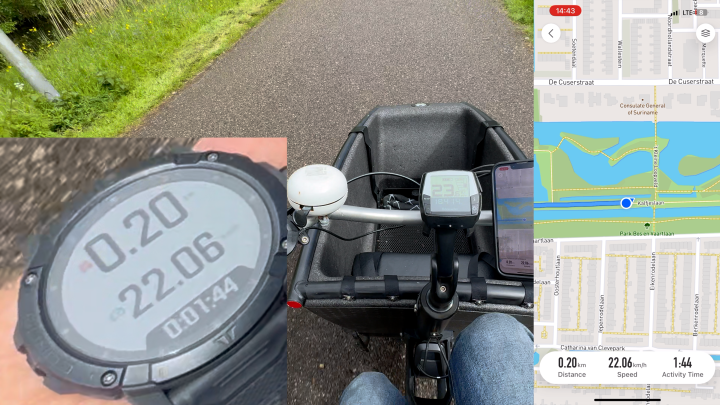
For things like bike commuting, it’s just a bit easier to have that on your phone on your handlebars, where it doubles as a mirrored screen of the map page (though oddly, doesn’t yet in beta seem to show any data pages, only indoor workouts show those).
Meanwhile, indoors, you’ll see the full data metrics:
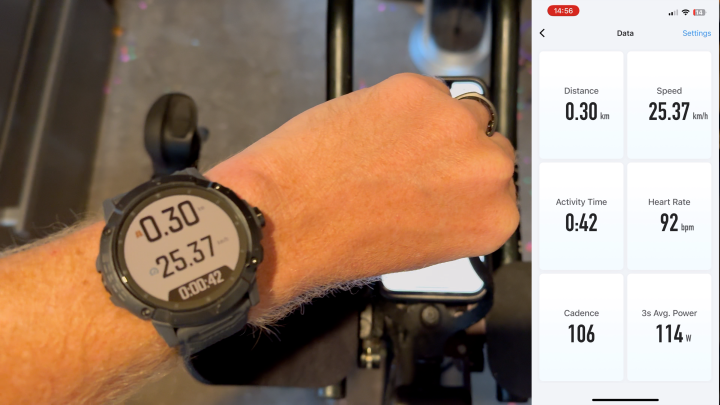
Now, once you’ve completed your workout, you’ll tap to end and save it. You’ll see a slate of summary information on the watch about your effort:

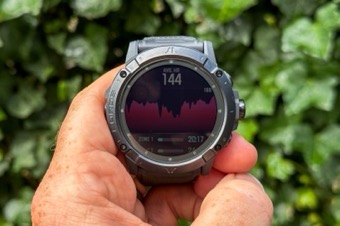


At this point it’ll sync automatically to your phone via Bluetooth, and then gets pushed to the COROS platform but also 3rd party apps like Strava. Here’s how a recent trail run looked on the COROS smartphone app:
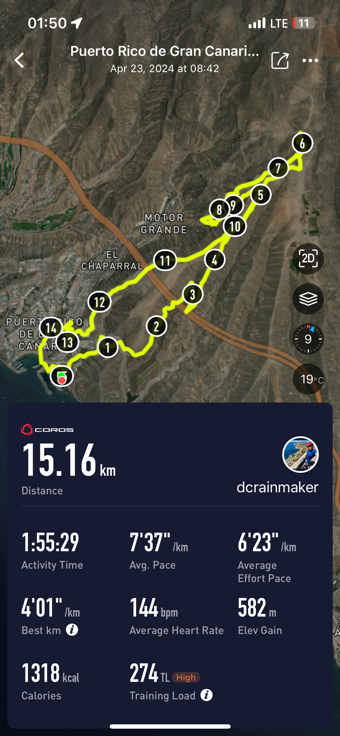
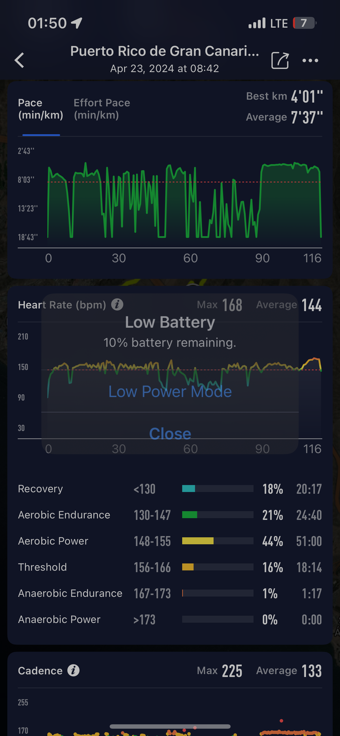
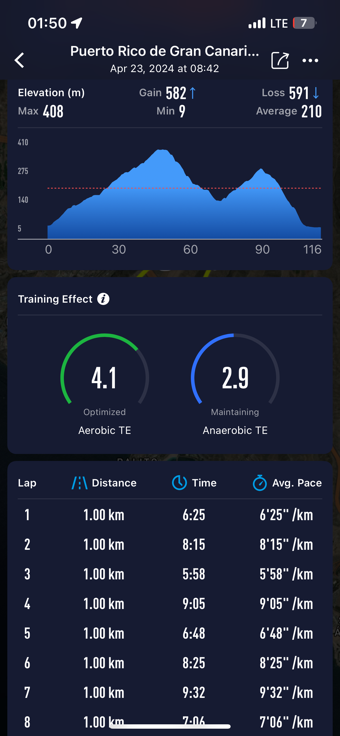
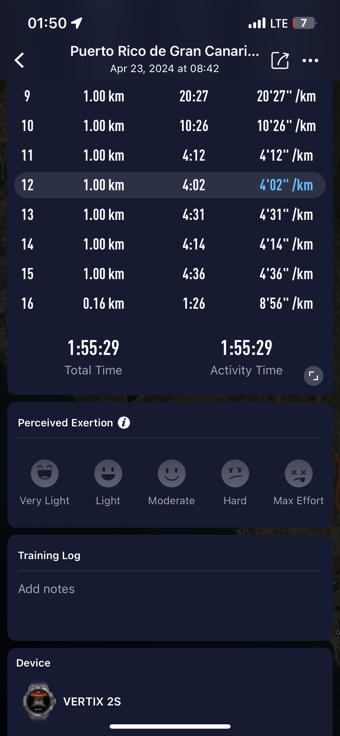
But likewise, here’s how a recent ride looks over on COROS’s web training platform. I know a ton of people don’t use that platform, but I find it super useful for just exporting out files really quickly for analysis. COROS also ties that into the coaching platform as well.
Now, in addition to the per-workout features, COROS also has training load features for various sports. These are designed to help you judge your training load and recovery times, though they still seem a bit short-sighted. For example, let’s look at the main training load widget/screen on the watch:
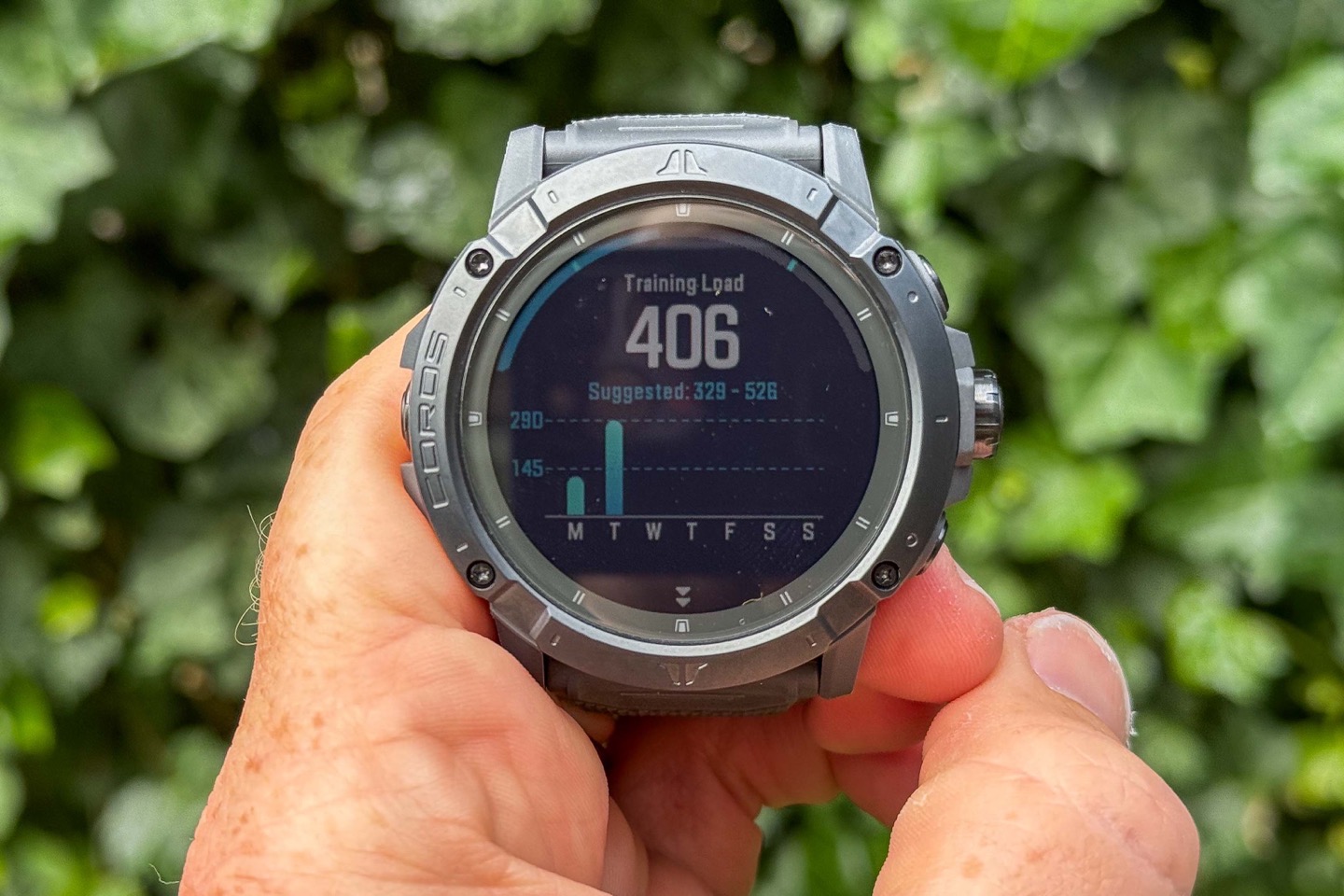
This load is factually incorrect. COROS resets this training load every Monday at 00:00, thus, your training load isn’t actually showing your current load, but just your load from each day of the new week. As any coach or athlete can tell you, that’s just downright silly. I harped on this during my COROS Pace 3 review, and had long talks with COROS about it since. Specifically that COROS needed to spend more time on understanding the sport science for the numbers they were creating – an example like this is a glaring omission of that.
Every other watch on the market shows your historical training load, because that’s what training load literally is. By resetting it every Monday at midnight, you negate the *ENTIRE PURPOSE* of training load. The purpose of training load is to see when you have too much load. Resetting it each week doesn’t make it go away.
In theory, that falls to the next widget, which shows your intensity trend. That figure takes your base fitness (a variant of load calculated over a time period), and then your Load Impact (your recent load), and spits out a number of how those two compare. If your recent history is too far above your base fitness, then it gets upset.

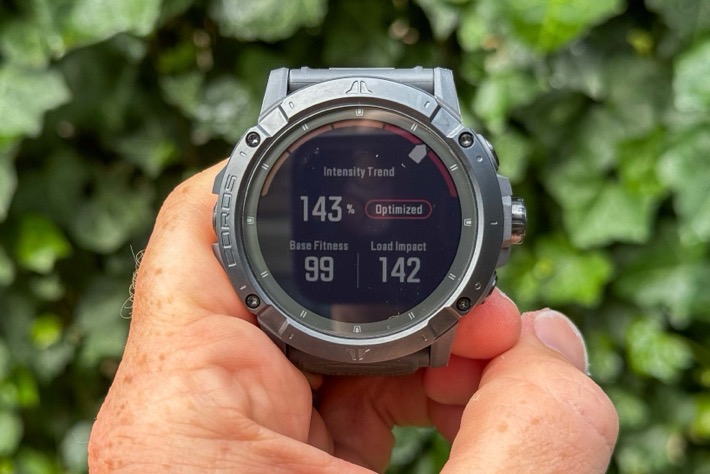
That’s how most other companies work as well, except here the entire thing is very black-box into how your recent load decays. This isn’t horrible, but I wish there were more clarity here.
Still, we are seeing COROS make better strides here. Or at least, commitments to doing so. Also back last year, I noted that showing/calculating 24×7 stress during a workout made little sense, because it calculates it as ‘High’/100%. That provides no usable insight, and again, is why other companies exempt workout timeframes from stress calculations (since it’s just throwaway data). On a call with COROS’s CEO last week, he noted that COROS is planning on removing workout stress calculations, though, as of today with the most recent beta firmware, that is not yet happening.
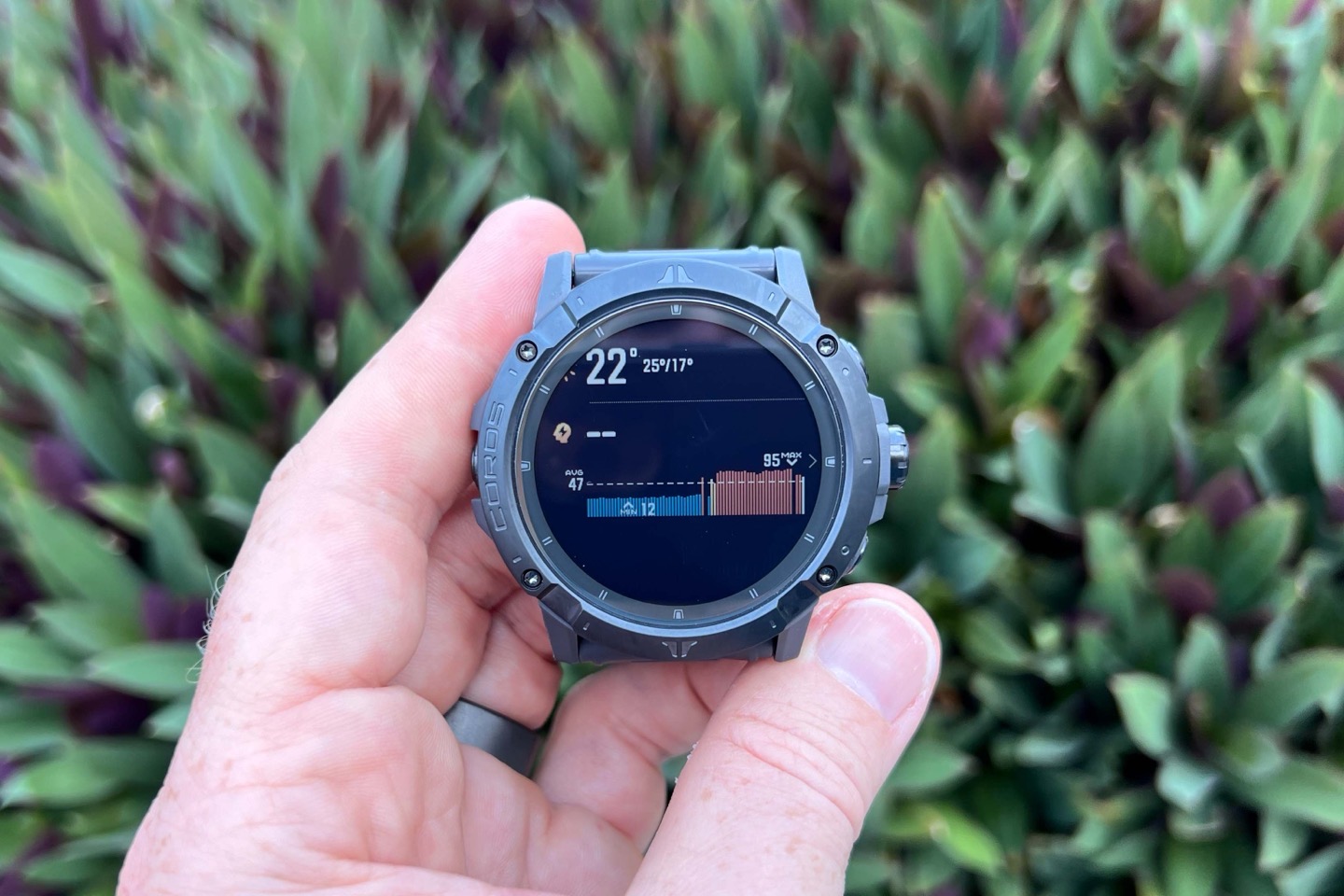
Still, it’s a good sign they’re listening, and hopefully, we’ll continue to see more tweaks in this sport science arena.
Navigation & Mapping:
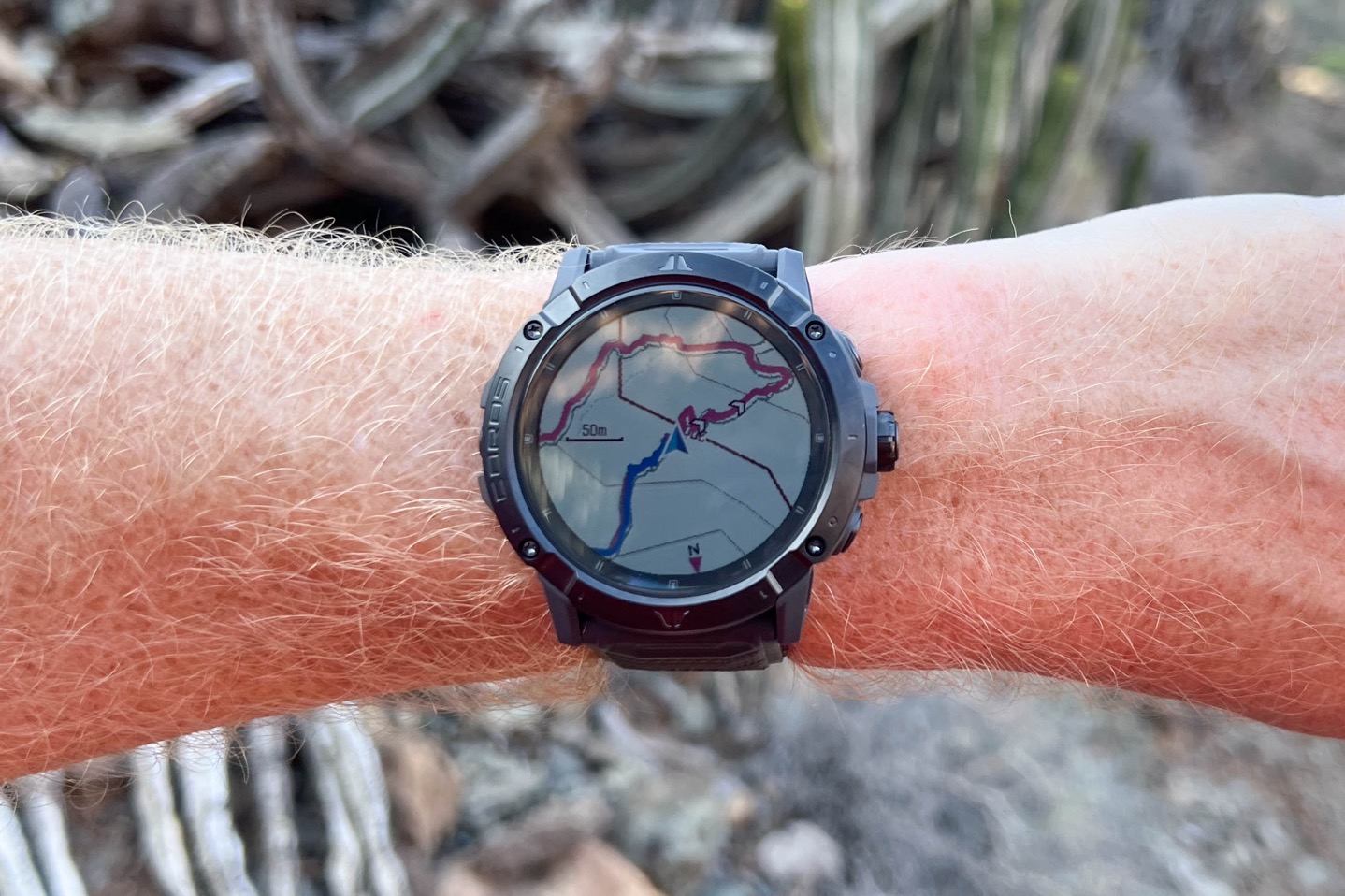
In this section I’ll dive into how navigation and mapping works on the COROS Vertix 2S, which, is identical to how it worked on the COROS Vertix 2. Still, if you’re new to the COROS realm, this will give you an idea of how this feature works and compares to other units out there.
The first thing to understand about mapping is the general mapping landscape in terms of map levels. Simply put: Just because a watch has mapping, doesn’t mean all maps are created equal. I’ve previously included this little chart/list in other reviews, which many people have said is super helpful to understanding the differences:
Breadcrumb trail only: This is when you don’t have a background map, but just follow a little trail on a blank screen – this is what the COROS Pace 3 has.
Non-routable Maps: This is when you have a map displayed behind your route, which shows terrain/trails/lakes/water/mountains/etc… However, this isn’t routable, so it doesn’t actually *know* if you’re on the ‘Deer Lake Trail’ – it just knows you’re on the breadcrumb track. If you stray too far from the trail, it’ll give you an off-course warning, but it cannot smartly re-route you back. It just tells you via compass how to find the trail again. This is what the Suunto Vertical & Race are, Polar Grit X2 Pro & Vantage V3, as well as all COROS APEX Pro/Vertix series are.
Routable Maps: This is the ‘highest’ level, and is when the watch can actually route on the trails by itself, if needed. It knows you’re on Deer Lake Trail, and the next trail coming up is Big Bear Trail. And it knows if you miss that turn, whether or not you need to turn-around, or can catch-up later on. This is what most of the higher-end Garmin devices are (any devices with mapping, like the Fenix/Epix series, or higher-end Forerunners).
Now, just because the COROS units don’t have routable maps, doesn’t mean they aren’t useful. Far from it. I only use routable maps on a hiking device perhaps once per year (admittedly, when I do use it, it tends to be super important – like escaping an incoming storm in the high Alps). Still, I don’t see it as a mission-critical feature for my usage. Note that for cycling, I do see it as more critical, given the vast differences in road cycling versus hiking on trails (distances traveled, speeds, variability, etc.…).
In any case, let’s take a trail run I did two days ago as an example. In my case, I created the route in Strava, though, because COROS’s ingestion of that route from Strava Routes was taking forever (something I’ve occasionally seen with COROS, it instantly showed up on Polar, Suunto, and Garmin), I actually ended up exporting out the GPX file from Strava manually, and then re-importing it in manually. That had the upside though of enabling turn-by-turn directions, since the route would effectively be from the COROS app (rather than Strava itself).
You’ll manually push the route to the watch after enabling it in your catalog. As I’ve said before with COROS, I’d really like to see this just be fully automatic. With both Polar & Garmin, it’ll automatically pull in favorited Komoot/Strava routes and push them to my watches. But with COROS I need to do the dance each time. It’s not a big deal, but just a usability thing COROS could improve.
In any event, once it’s on my watch, I’ll go ahead and select the activity type I want (e.g., Trail Run, Run, etc…). In my case, that’s Trail Run, and then I choose Navigation from there to select the particular route, which was ‘Desert Trail Run’:
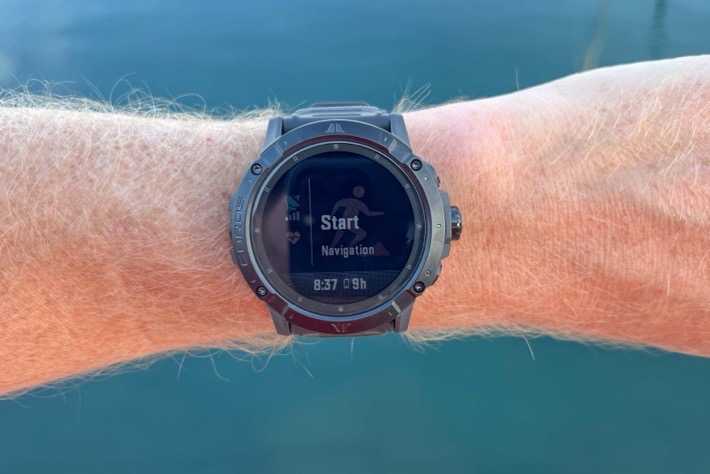

You can then see the elevation profile and map, as well as choose to do the course in reverse. Further, you can toggle on/off the off-course warnings (called Deviation alerts). And you can toggle the Turn-by-Turn navigation too. It’s all pretty straightforward.

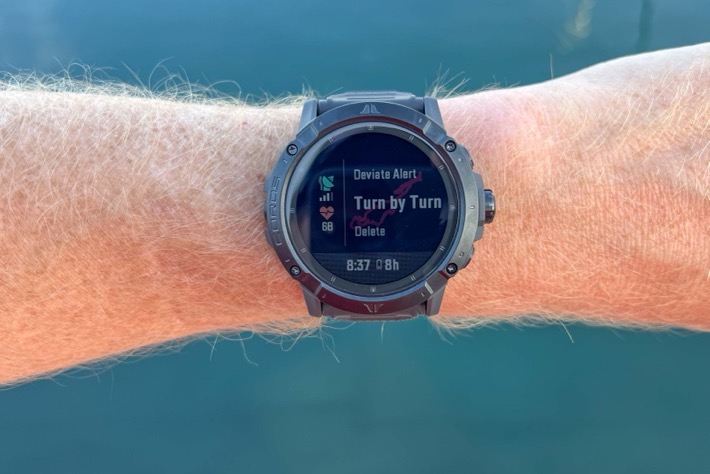
Now, once out on the trail, you’ll see the map that I’ve downloaded (more on that in a second), as well as my route with directional arrows/chevrons.

As I approach a fork in the trail (which is predetermined by COROS using the app), then it’ll give you an arrow briefly for which direction to choose. I do wish these arrows would stay up till you made the turn (like every other company).
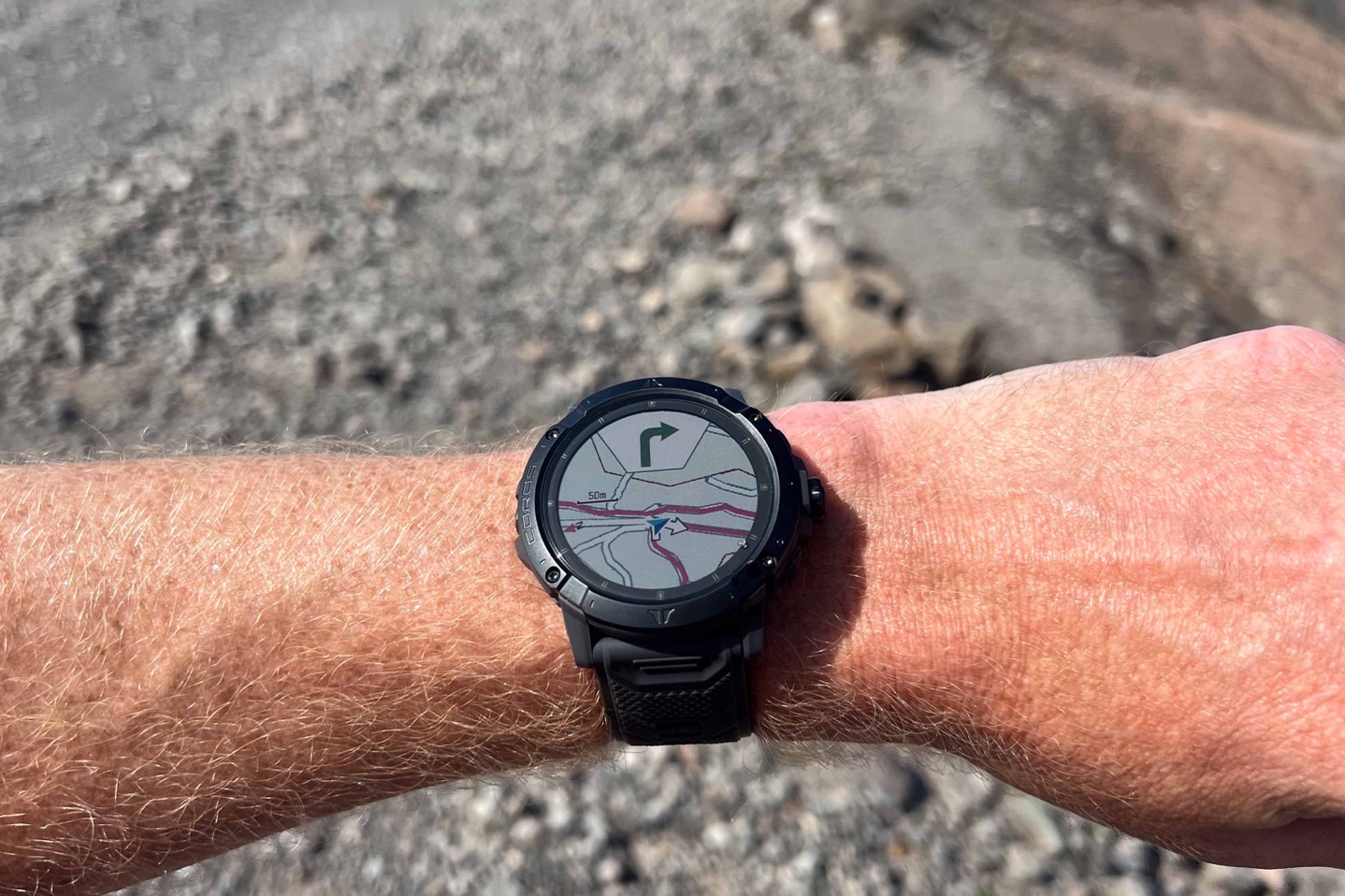
In the event you go off-course, it’ll give you an off-course deviation warning. But it won’t give you any guidance to getting back on course like a routable map would give you. That’s essentially your problem.
Still, having the map (versus a blank breadcrumb trail screen) is super handy just to be able to validate various forks in the trail. This moment in my route was one of my prime examples of that. This junction had about 5 different trails intersecting it. It made it really easy to know on the map I needed the left-most trail of the set. Whereas on a breadcrumb trail (like the Pace 3), this is much more difficult, and you’re likely to play a bit of trial and error.
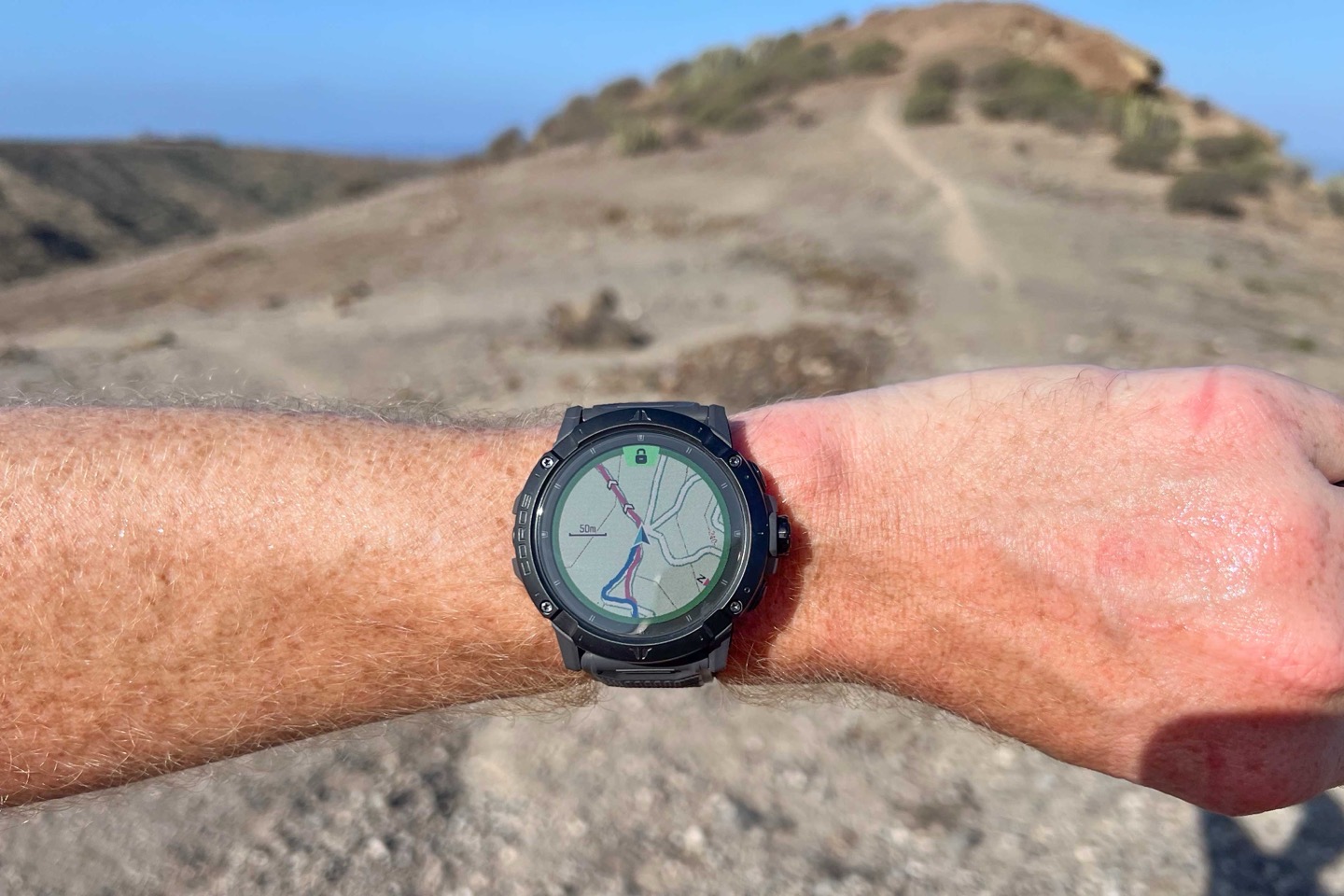
Additionally, you’ll also see where you are in the elevation profile, for planned courses:
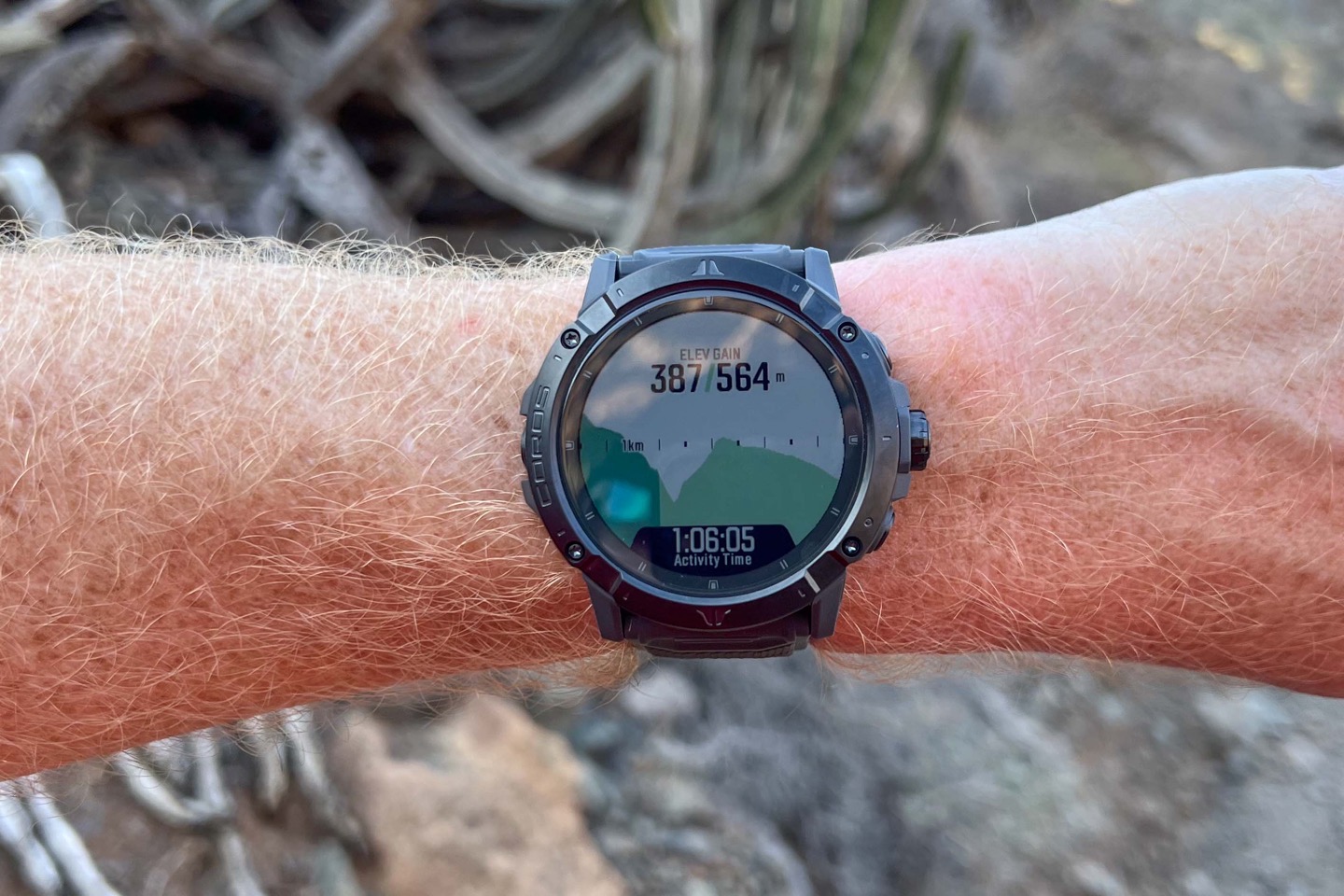
Now, when it comes to the maps that COROS has, there’s topographic details, but no other points of interest or labels on them. So you can’t see the road/trail/lake/mountain/etc names as you would on Garmin’s maps. In most cases, that’s not a huge deal, to be honest. Most of the time I’m in various foreign countries, and these names are rarely super helpful to me (since I can’t pronounce them anyways and rarely matter to the actual route navigation). But again, if you were talking road cycling or cycling in general, these are much more important.
Speaking of those maps, you can download maps by choosing them within the app using the Map Manager. All the maps are free, globally. One of the things I like most about COROS’s maps though is the fact that I can actually download them over Bluetooth. Every other company requires downloading map tiles via WiFi, due to the larger size of the map tiles (Bluetooth isn’t good for large data, just small bits). In COROS’s case, they’ve sub-divided up the world into a gazillion map tiles, so you just select the tiles you need, and choose to download via WiFi or Bluetooth:
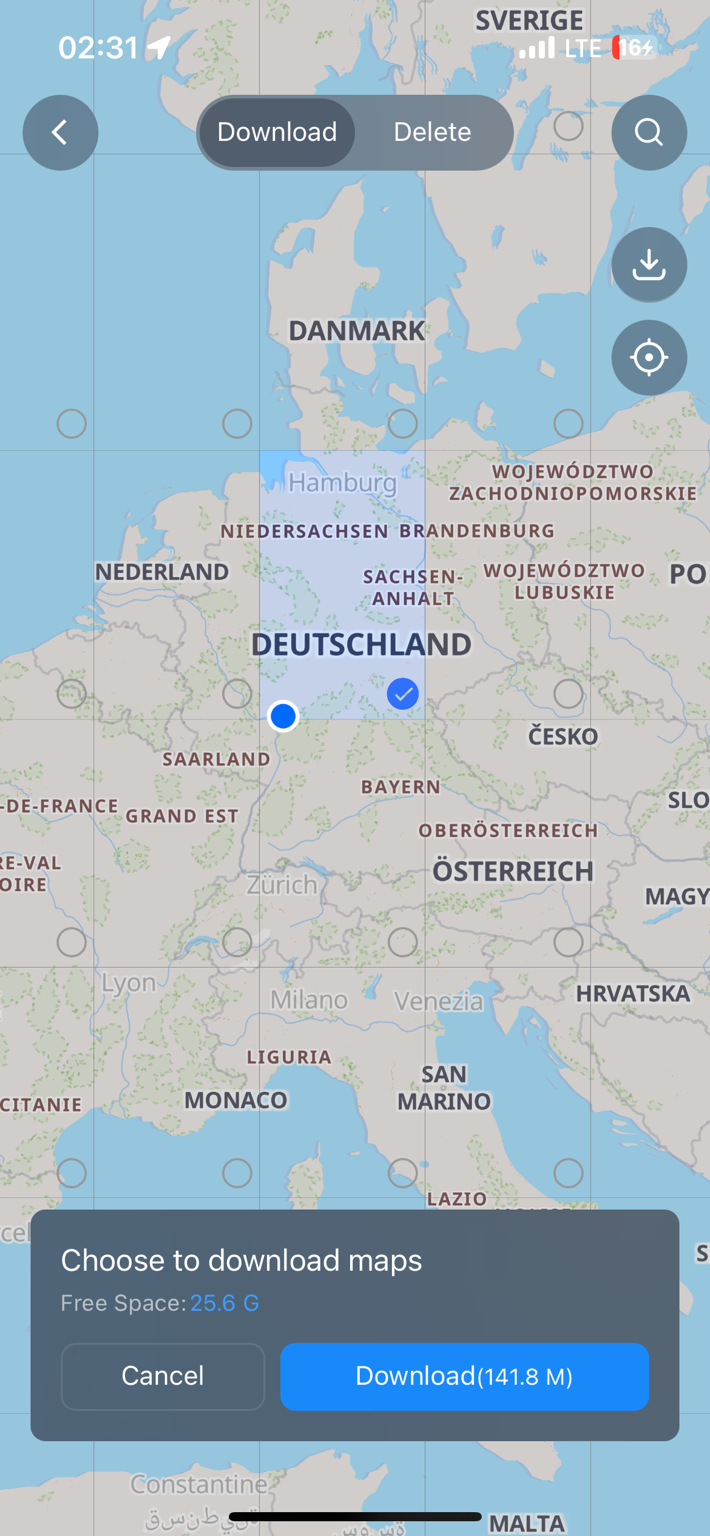

Again, about 90% of the time I realize I don’t have the right tile when I get to my destination country, and so the ability to quickly do so via Bluetooth from my phone is a massive ass-saver compared to trying to get them via WiFi (as watches can’t leverage hotel networks due to the sign-in prompt).
Still, COROS will eventually need to add in data labels and such to increase competitiveness with Garmin who has them already (just as Polar & Suunto will have too, something both companies have said they are working on). In the meantime though, the COROS navigation is perfectly functional, and easily has gotten me back from many trail runs and hikes, including over the past week out in the mountains and deserts.
Heart Rate Accuracy:
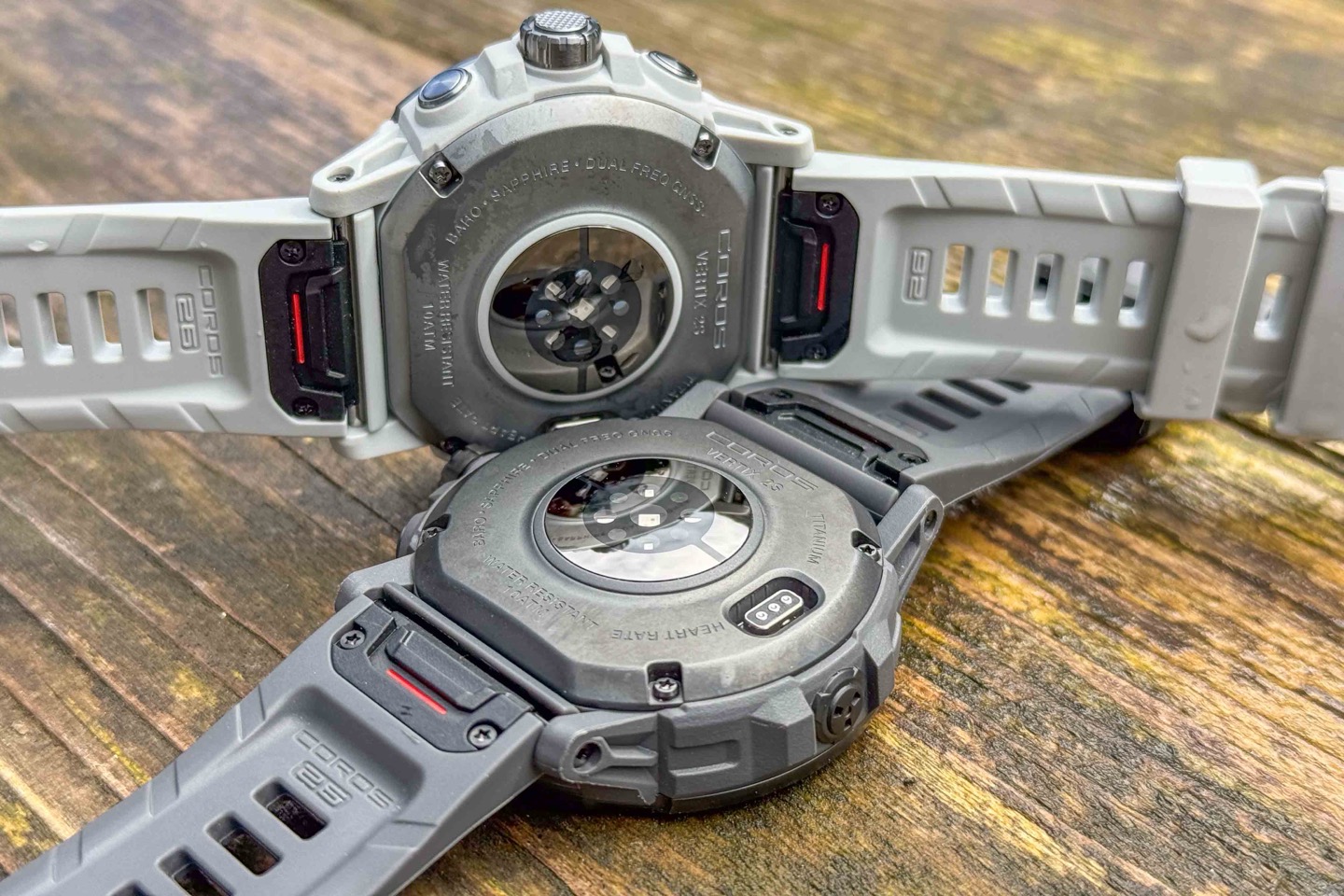
First up, we’ll take a look at the accuracy of the COROS Vertix 2S and its updated optical heart rate sensor. In this section, I’m primarily focused on the workout performance, since that’s the piece that’s most critical for a sports watch.
For these tests, I’m looking at a variety of workout scenarios, and comparing them against both chest straps, other competitor watches, as well as other sensor locations (including COROS’s own heart rate band). These workout scenarios include steady-state efforts, interval efforts, and doing so across multiple sport types.
We’ll start off with this trail run I did on Tuesday, as a good baselining moment. This route was mostly climbing steadily upwards for the first hour, then a bit of a descent (easier, because it was more technical/steep cactus/cliff avoidance, and thus more of a brief walk), and then back to running downhill the last 5-6KM. All of which is a great way to see how things perform.
I had the COROS Vertix 2S on one wrist (optical HR), the Polar Grit X2 Pro on the other wrist (optical HR), then a HRM-PRO Plus chest strap (connected to a Garmin Epix), as well as COROS’s own arm band HR sensor (connected to a Suunto Vertical). Plus, there was a Whoop 4.0 band in the mix too, though it’s not shown on this data set. Here’s the data:
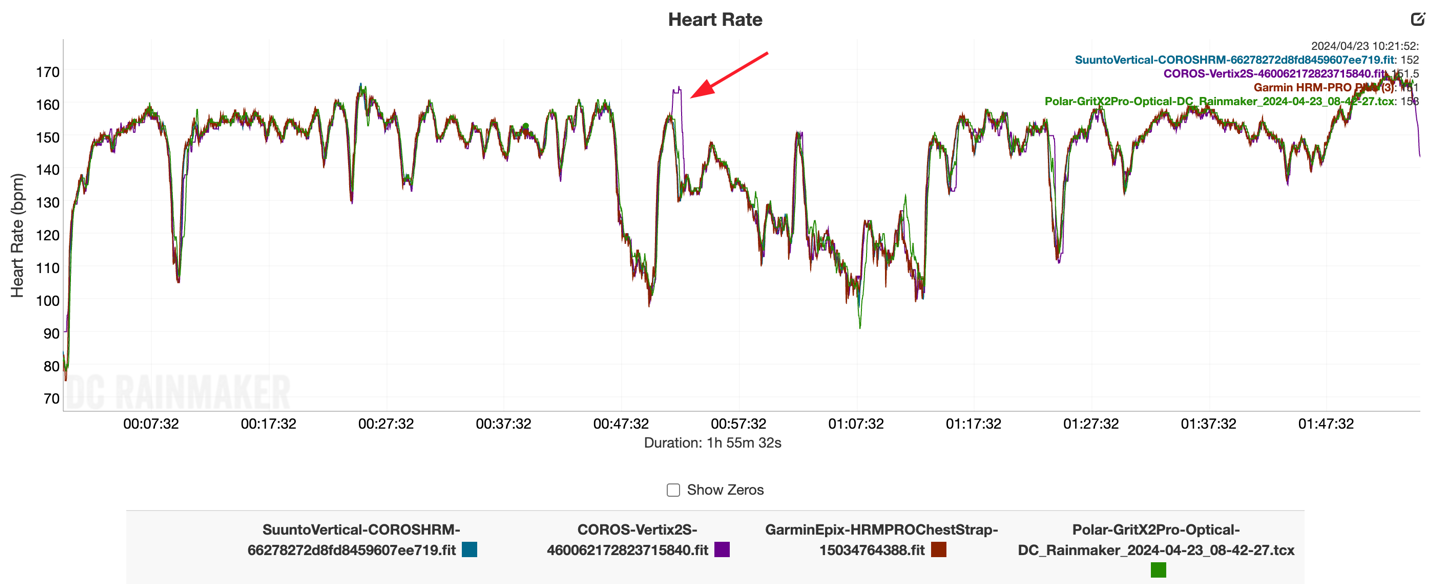
As you can see, things are really darn good here from both units. Frankly, this was the best workout I’ve seen to date from not just the COROS Vertix 2S, but also the Polar Grit X2 Pro. There was only one brief moment you see above where the COROS Vertix 2S brain-farted and spiked the HR value. I’m not quite clear why, as nothing special happened then.
Next up, we’ve got a hot and sweaty seaside run, which included some hills, but was also part interval run. I did the first half steady-state (to the extent the hills would let me), and then did intervals every kilometer for the second half. Same crew of watches as above, here’s that data:
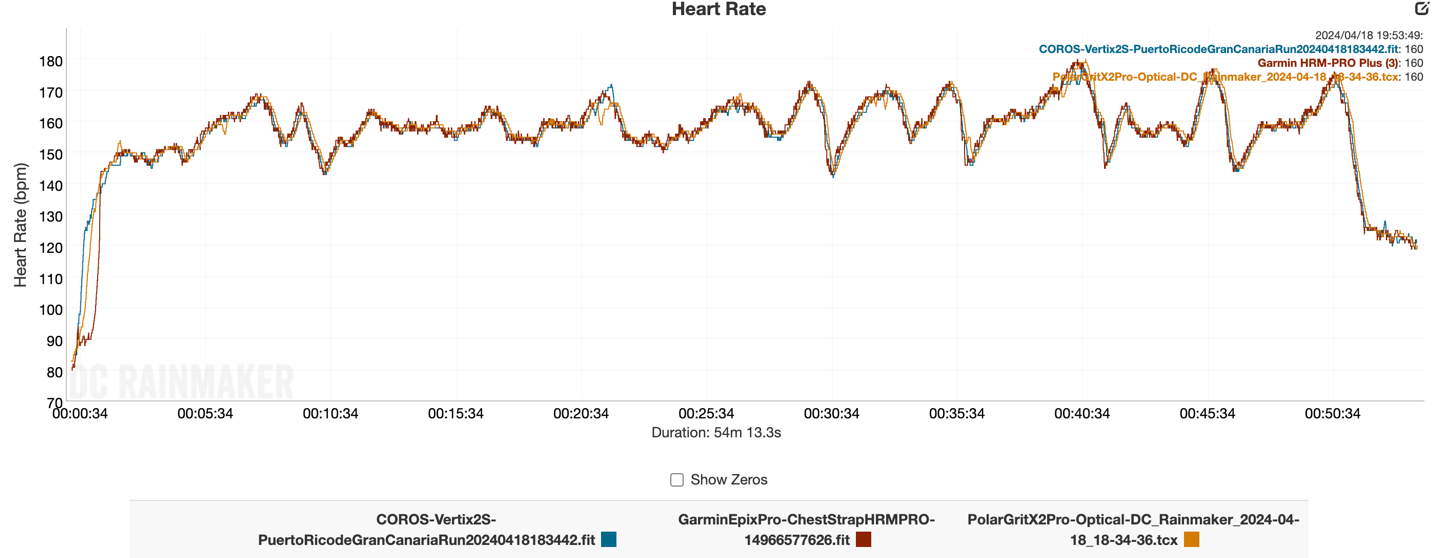
Again, reasonably strong performance here as well. A bit more wobbles from the Polar Grit X2 Pro, and one brief spike from the COROS Vertix 2S, but again, these all did well. Unfortunately, it’s all downhill from here.
Next, we’ve got a run back in Amsterdam, this time in cooler (but not cold) rainy weather. This was an interesting run in that I did 2KM steady-state, then 250m as a hard interval. Rinse/repeat, for the entire run. Again, same crew of watches, but as you can see quite quickly – things aren’t so hot. The red arrows are pointing to COROS Vertix 2S issues, though frankly, you might as well consider them Polar issues too.
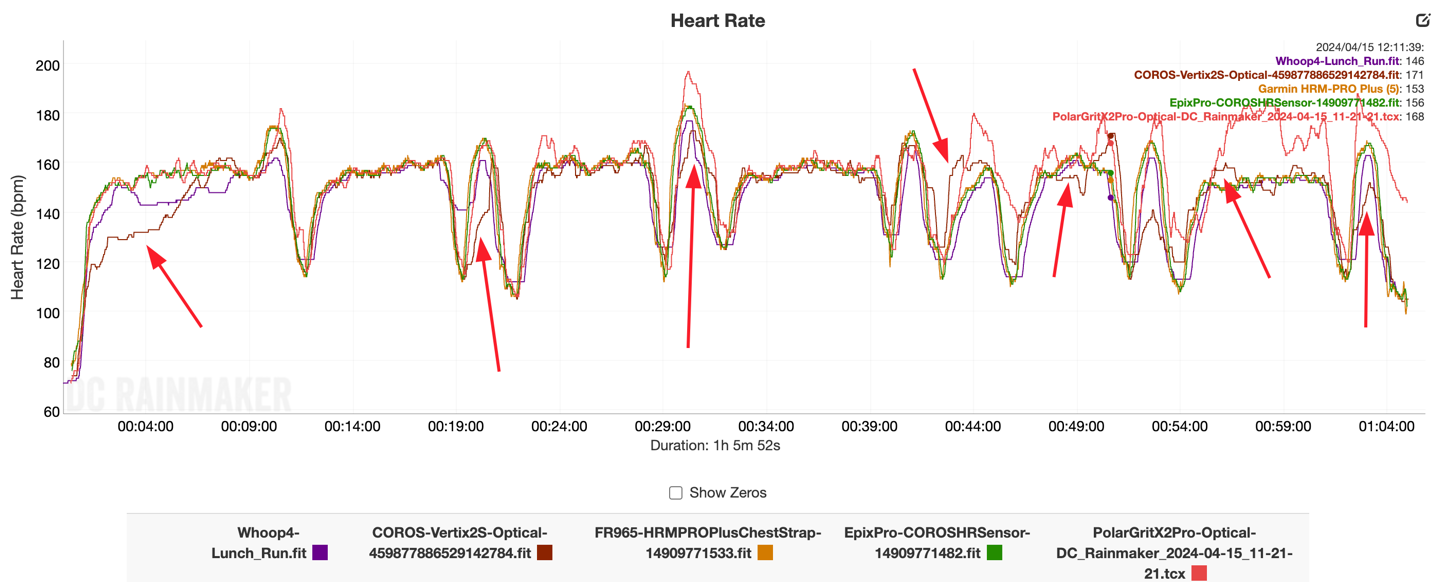
This should not have been a difficult run – heck, as I often joke, even the Whoop band got it right this time (mostly). Granted, removed from this graph is the horrific accuracy of the Sennheiser Momentum Sport optical HR headphones (because it was so messy you couldn’t otherwise make sense of the other watches on this graph).
In any case, as you can see, the new COROS & Polar watches more or less missed every interval, as well as some steady-state sections.
Now, switching sport areas, here’s a 3hr ride. This one was a main climb section for about 75 minutes or so, followed by a steep descent, and then steady-state into a solid wind while slightly descending (so, still work). Same crew of heart rate sensors as above.

I was surprised to see the Vertix 2S (in green) really struggled here on the ascent, since it was very steady-state. Actually, it kinda struggled pretty much the entire time. But hey, the Polar got it right here, so that’s a bonus.
Here’s another ride – this time some intervals as you can see. This was perfectly smooth pavement, but you can see the COROS Vertix 2S still struggled a little bit from time to time. Not horrifically, but certainly skewed away from the two reference sensors.
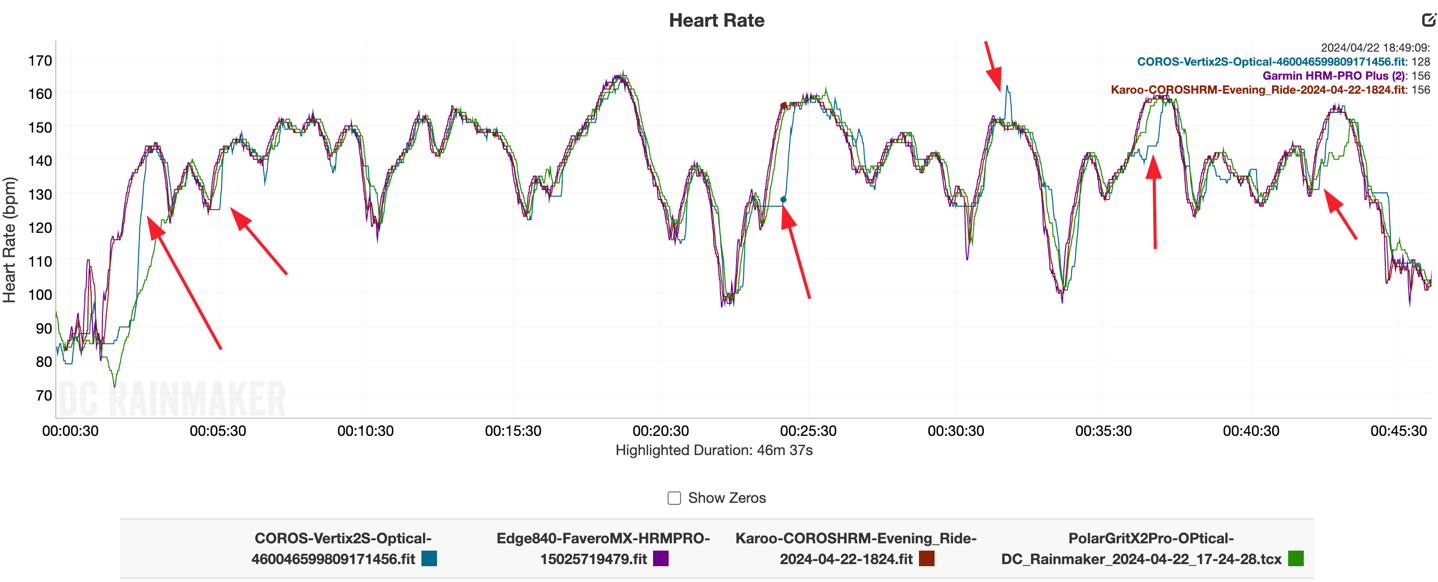
Yet, when I did faster paced intervals a few days prior, it was proper dumpster fire status (COROS Vertix 2S in purple, the teal line with the Karoo is the COROS HR band).
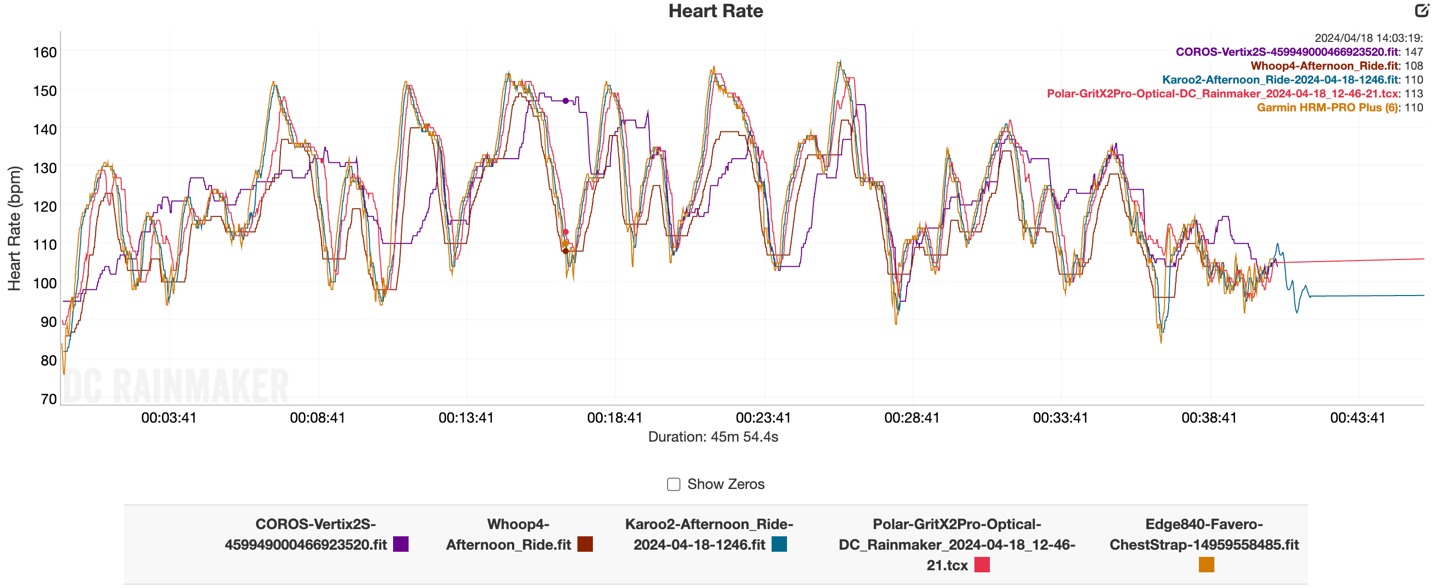
Next, another climb, and this time it sticks the landing perfectly on this 70 minutes of climbing section, where all is perfectly fine. Of course, it gets a bit messy for a bit during some descents in the middle (and then fine again as I get back to steady-state riding).
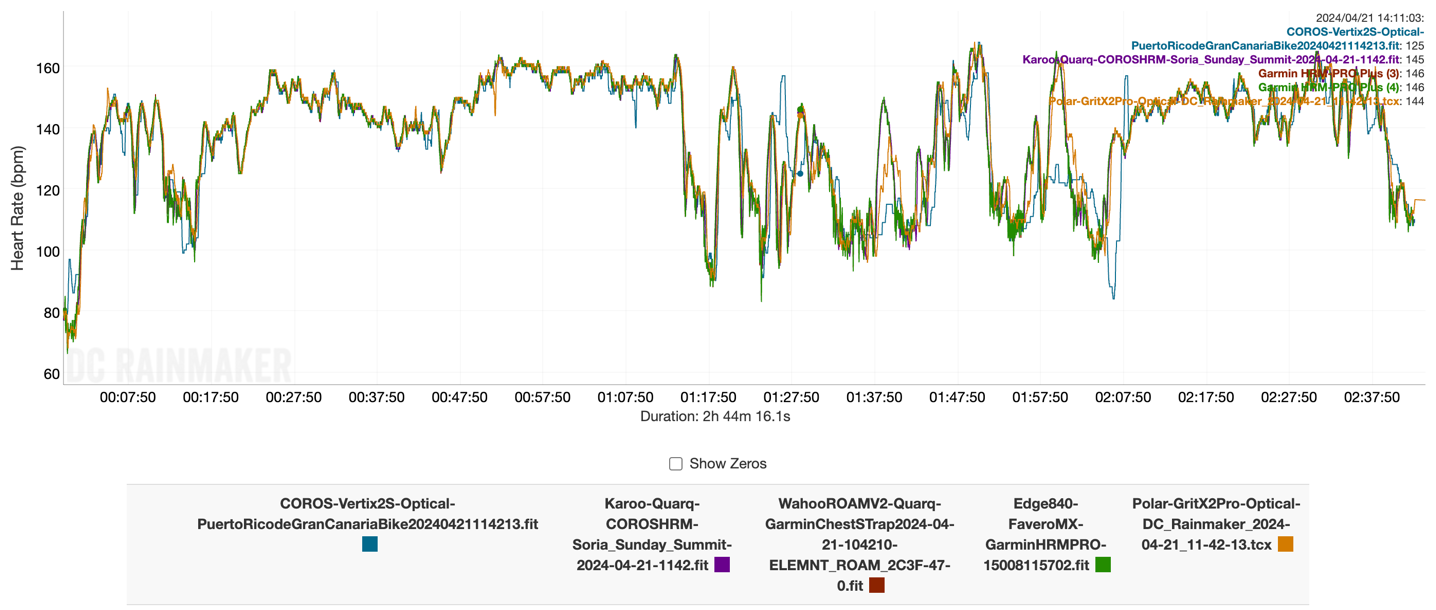
Overall, looking at heart rate accuracy, this is essentially what I saw with the COROS Pace 3 and its (exact same) optical heart rate sensor. Sometimes it’s good, sometimes it’s meh, and sometimes it’s horrific. The problem is, I can’t really predict when it’s gonna be great, and when it’s gonna be bad. I’d have thought it’d totally ace the big long climb ride and fail the middle ride intervals, yet it did the opposite. Same goes for the 2KM/Intervals run, it should have aced that (and then I’d have guessed it’d have struggled on the really short/hard interval runs, where it did mostly OK).
At the moment, while COROS continues to make gains in many other areas, and this sensor is definitely better than before – it’s still far from industry-leading. Likewise, while Polar’s new Grit X2 Pro sensor isn’t great either, it does seem on average, to have better performance than the COROS Vertix 2S.
GPS Accuracy Testing:
Next, let’s look at GPS accuracy, and the newly redesigned GPS antenna. Remember, it leverages the same GPS chipset as before. For all of these tests I had numerous other GPS devices with me. As always, I’m comparing not just the GPS tracks to each other – but more importantly, where I actually went.
Starting off with the trail run again, this was mostly open desert, except one loop that was in a canyon with tall cliffs on all sides. As you can see at the high level, things look pretty solid. Here’s the data:
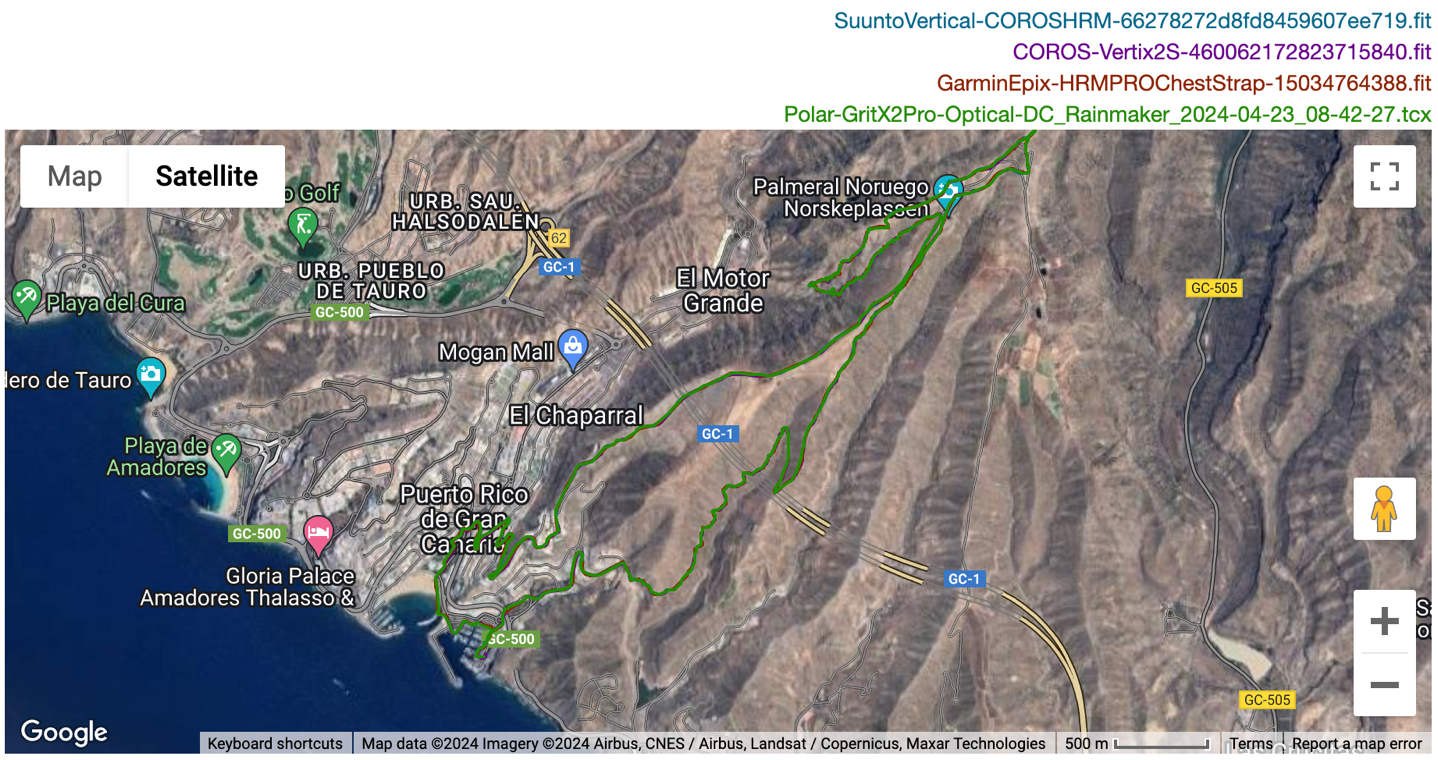
So let’s zoom in a bit. Again, it can be hard to see, but I’ve zoomed in on the section up against the cliffs. Here we can see slight differences between the units, but only by a few meters. Everyone did really good here.

About the only spot on this entire run you can nitpick is this brief moment where, under an overhang, the Polar Grit X2 Pro plotted a few points off to the side, but really, that’s super nitpicky.
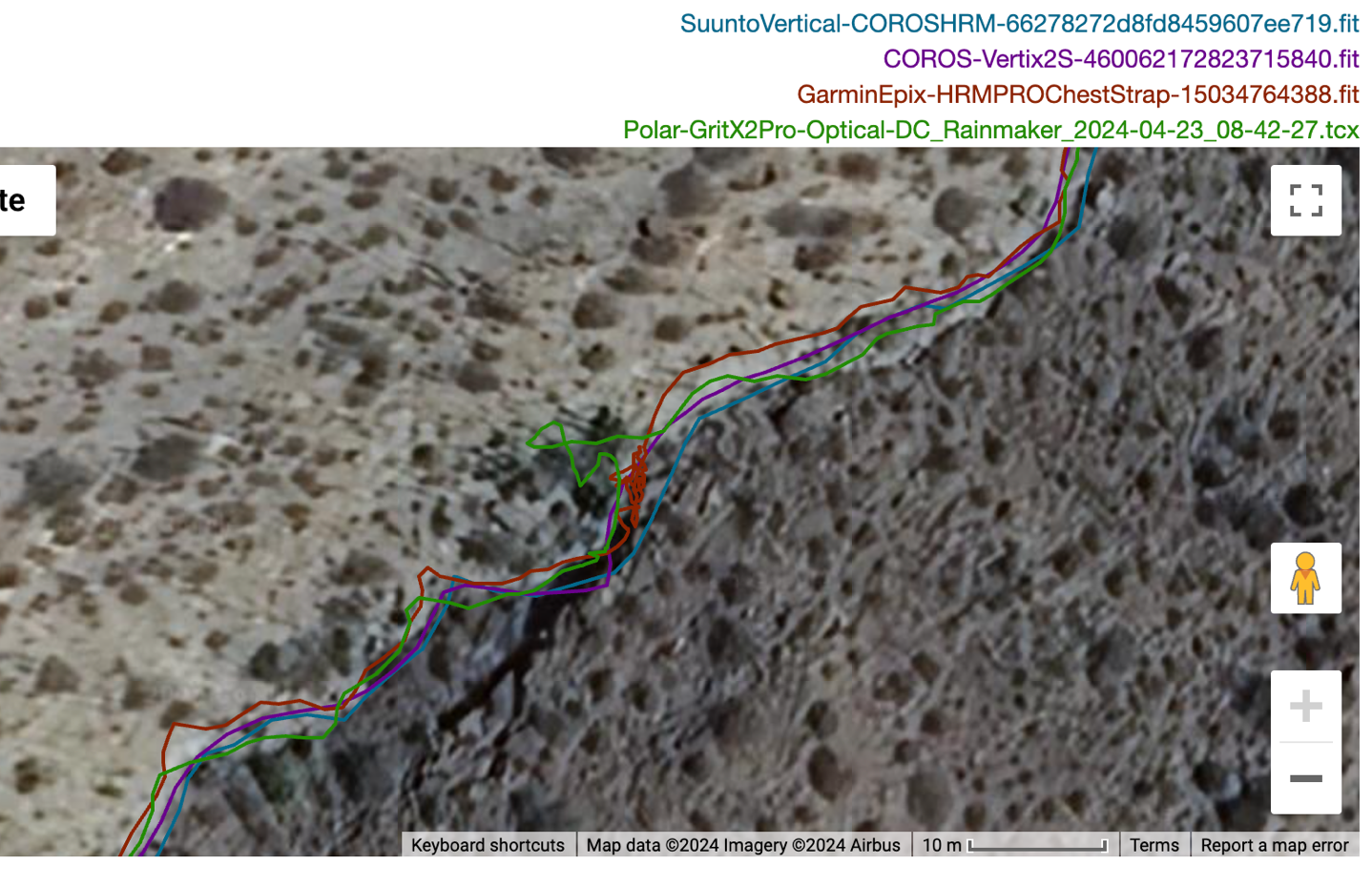
So let’s kick it up a notch. This time we’ve got a city run in Amsterdam. The first portion is relatively easy, though it does include a massive 8-12 lane highway + 4 train lane underpass, which all units nailed.

The other portions of the run before the tall-building sections were good too from most units, albeit the Polar did seem to wander a little bit off the track. Not much, just like a meandering toddler that’s not quite holding onto its parents’ hands (you have to zoom in above on the link).
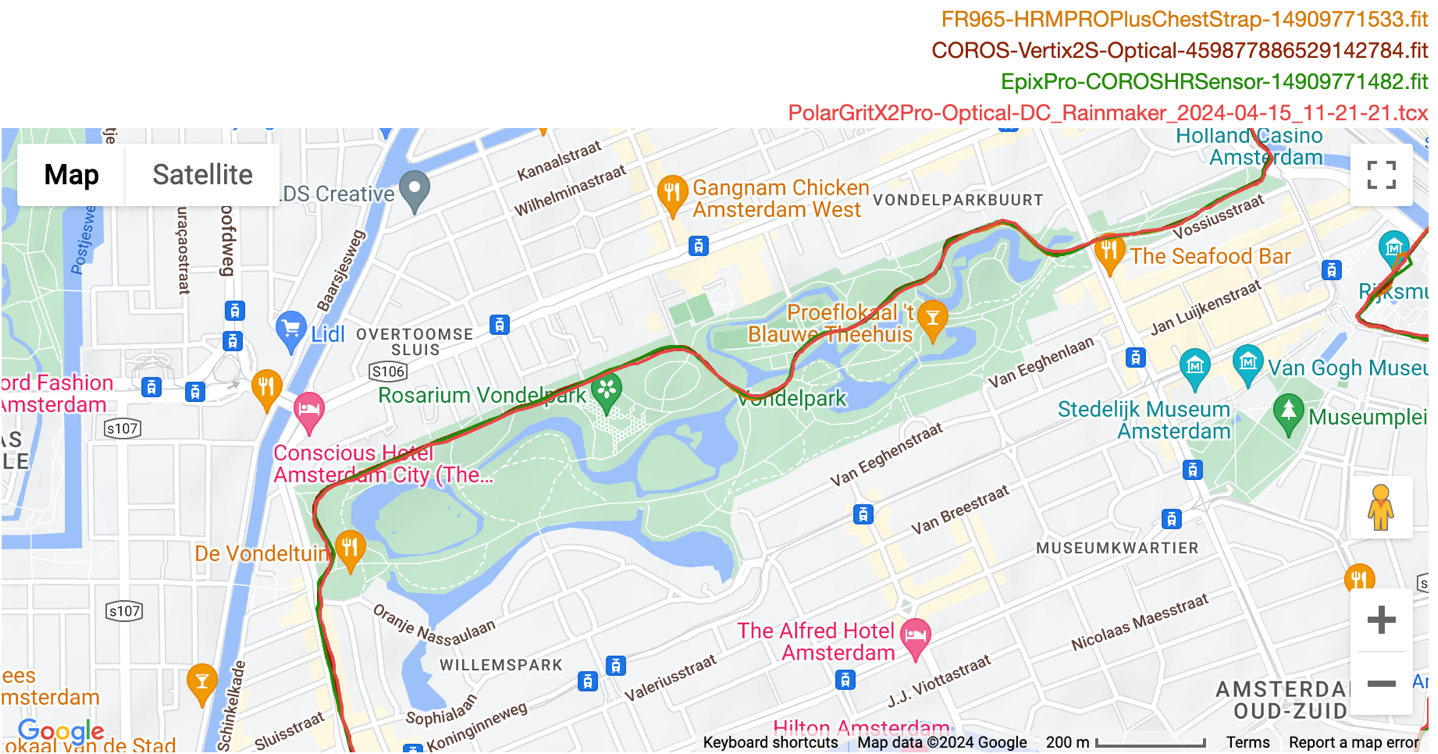
In any case, the real meat of this run is the downtown building section, with tall buildings going upwards of 30 stories. I run up/down this stretch in virtually every GPS watch test I do.

Here, the COROS Vertix 2S did very well (alongside the Garmin Epix Pro). The Polar Grit X2 Pro cut some corners, and the Garmin Forerunner 965 also took a dip into a building for a second. This is probably the best performance COROS has ever had from any of their devices on this test.
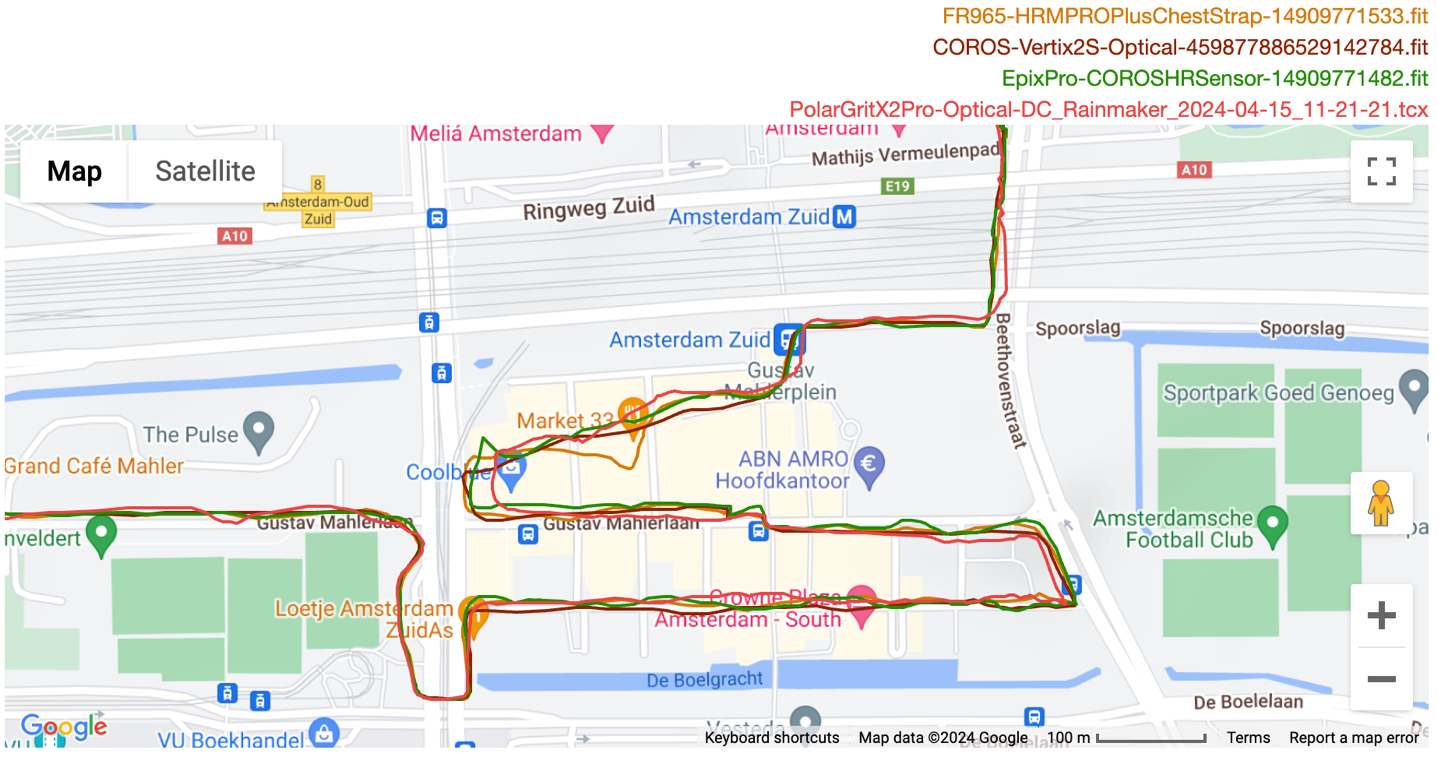
Next, back into the mountains we go, this time on that 3-hour climb with a huge slate of competing devices. This is the who’s-who of GPS bike computers. Here’s a quick high-level map that basically doesn’t tell you anything useful, but I include it for context. Here’s the data link.
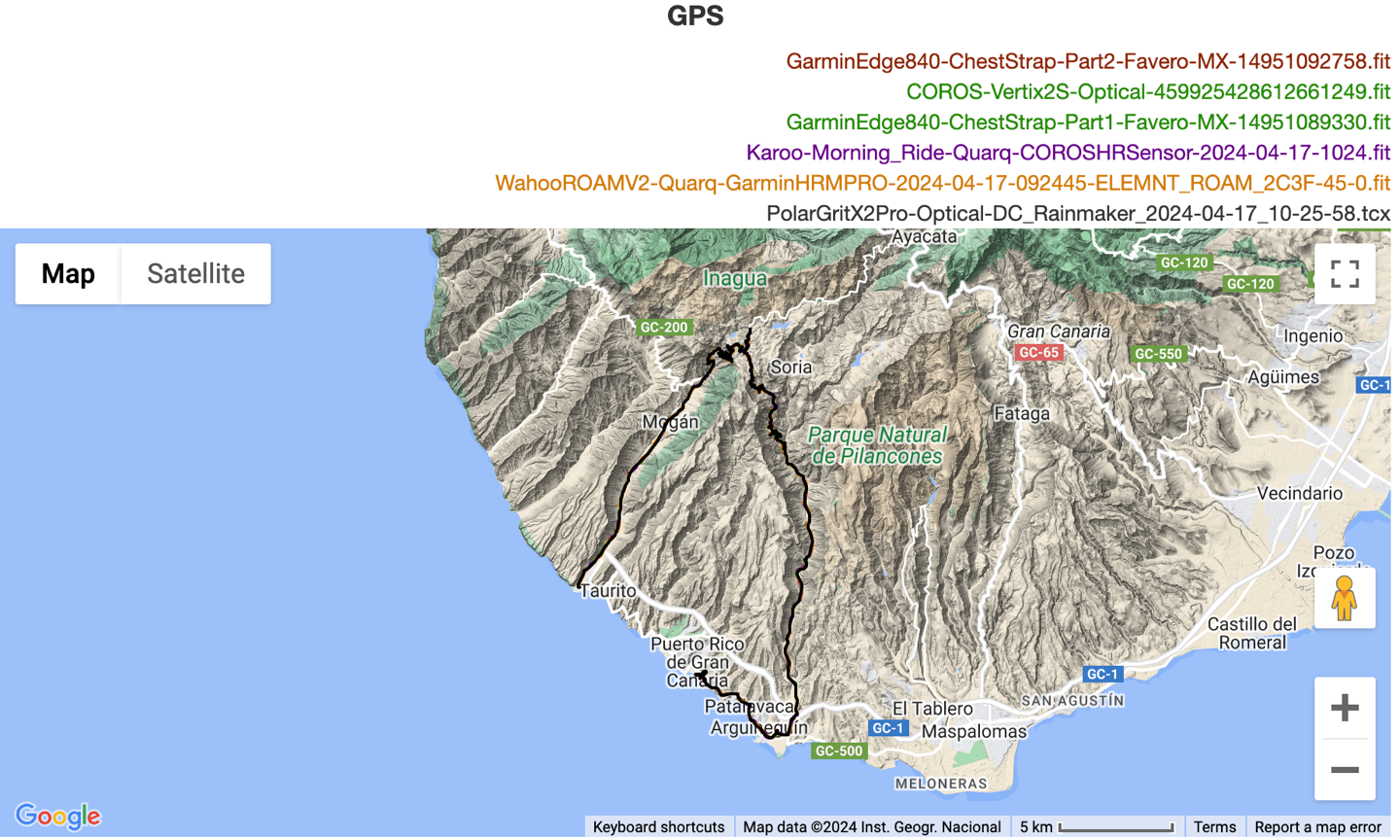
More importantly, here’s one of the switchback sections going up.
As you can see, it’s virtually identical to the other units out there, so good job at low-speeds climbing up these steep switchbacks against rock cliffs.
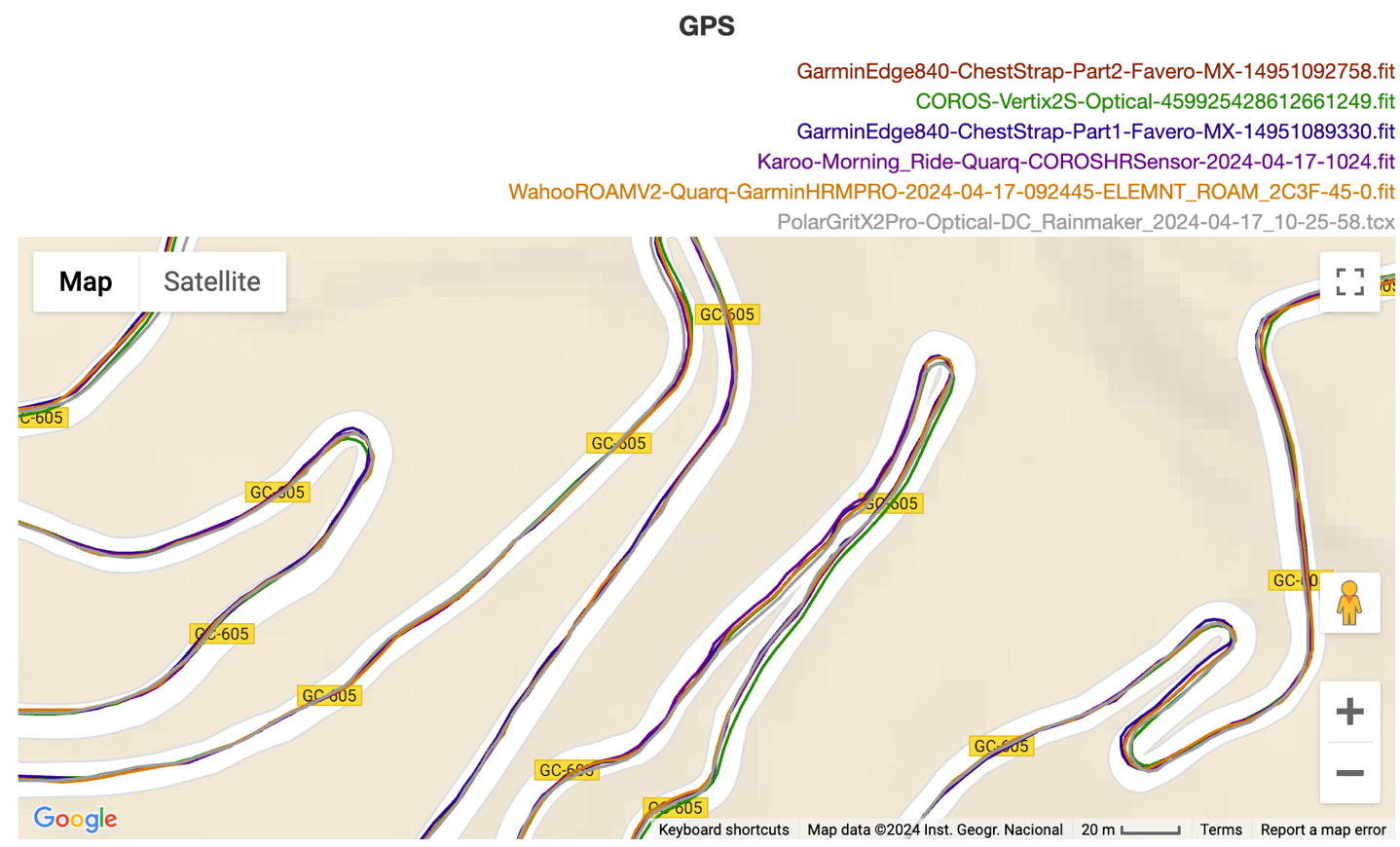
However, if we enter the nitpick zone, you’ll notice on the descents (a different road going down), it wobbles a tiny bit compared to all other units. Again, this is still a totally good performance, but it’s not quite as identical as the others, as it seems to be slightly offset. You’d never notice this though if you were just riding this by itself.
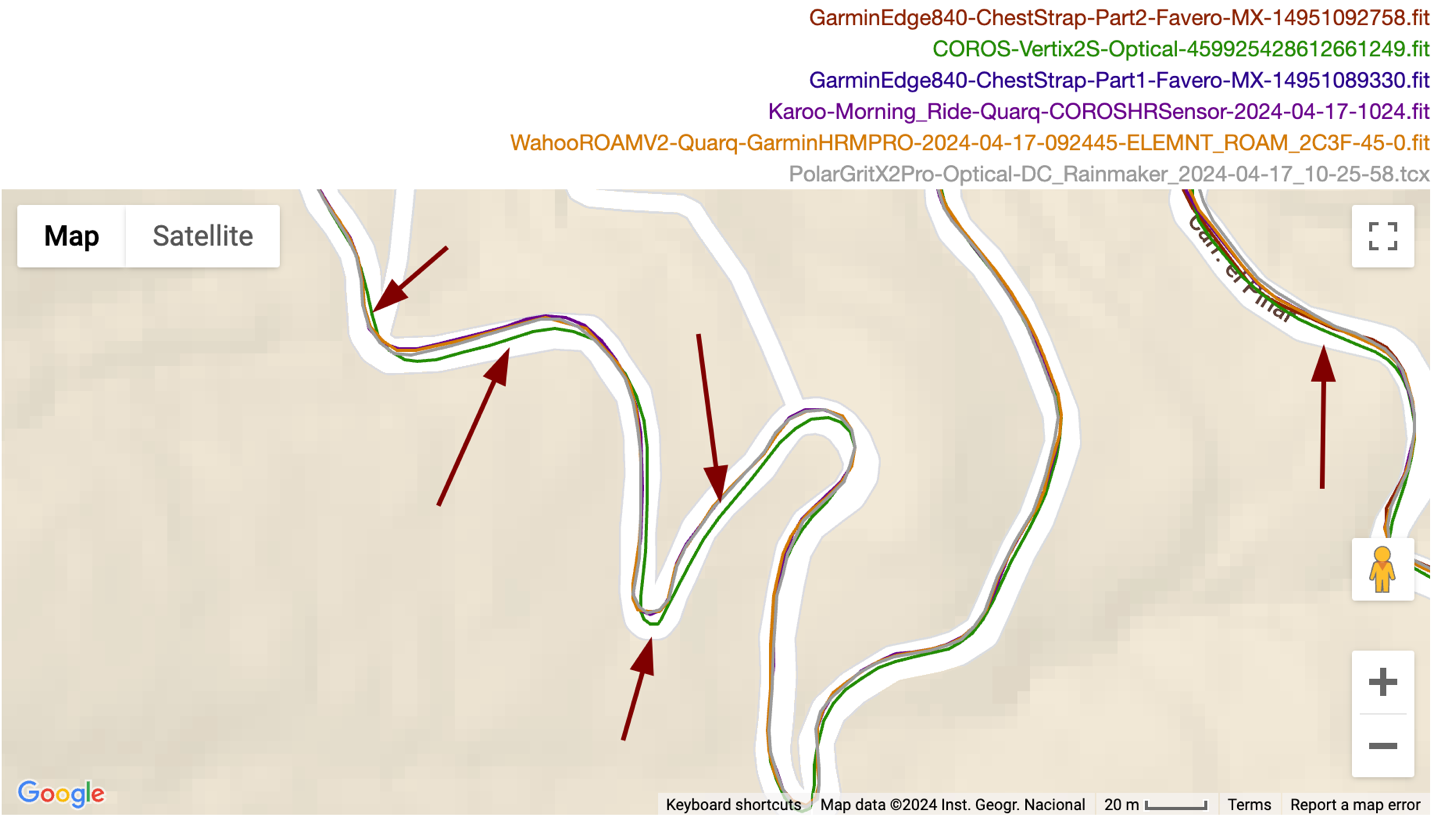
My other rides are all the same in terms of accuracy, as are my other hikes/runs. I’ll save you that boredom – all is great.
However, where things aren’t super awesome: Openwater swimming.

I was doing a large openwater swim GPS test extravaganza the last week, with 14 different watches, including the COROS Vertix 2S. And unfortunately, it didn’t end well for the Vertix 2S. In each test, which is about 1,100-1,300m, and roughly a circuit course, I will stop and pause to tread water for about 15-20 seconds. Watches must be able to pass this portion of the test, as stopping mid-swim is totally normal – especially if you’re swimming with a group, getting stuck in congestion at a race at a turn buoy, etc….
At this moment, the Vertix 2S plotted a very wrong point, way off to the side. After that point, the rest of the GPS track was iffy at best. You can see it compared to the Fenix 7 Pro & the reference track (on a swim buoy) below):
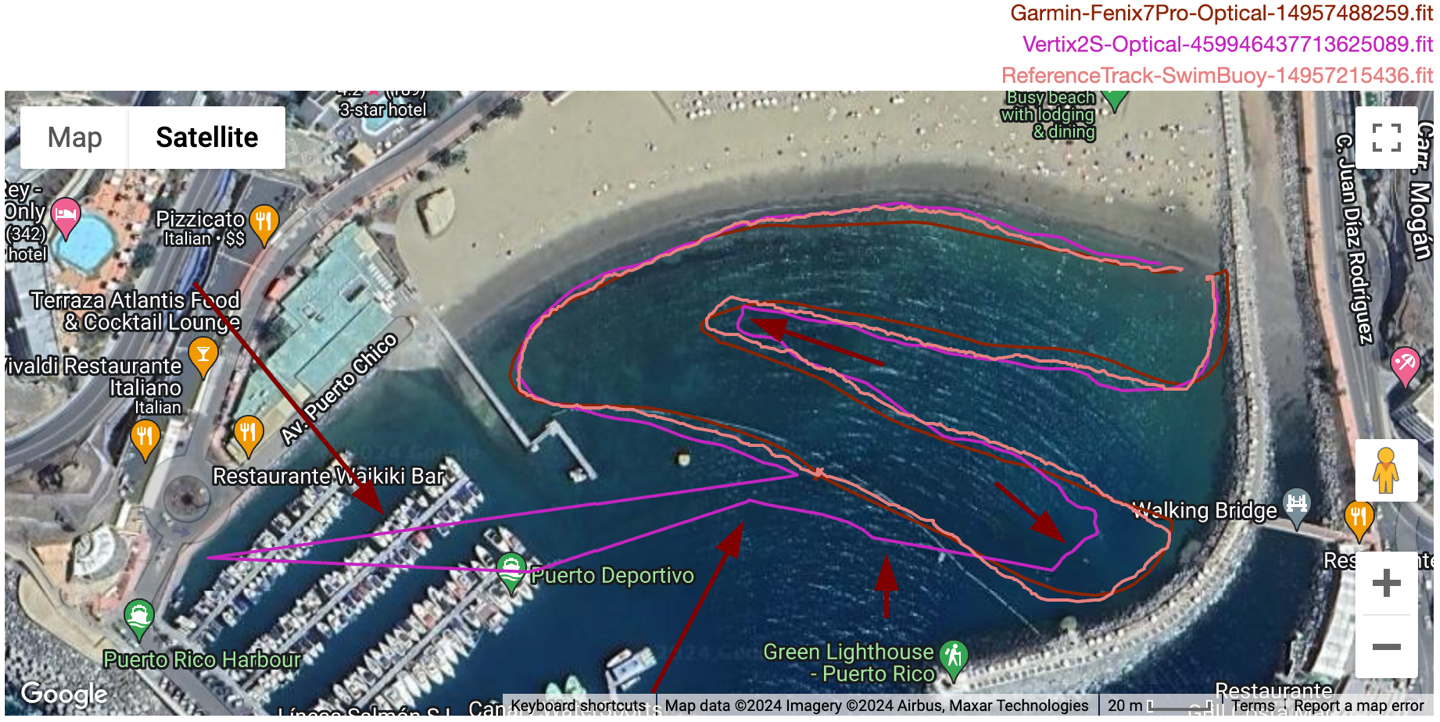
I brought this up to COROS, and they said they’d look into it, but did see that it plotted an erroneous point after re-acquiring GPS. Unfortunately, this trend isn’t actually new for COROS, and is something I saw with the original Vertix 2 when it launched and numerous subsequent swim tests. Perhaps COROS needs to leverage aspects of their rock-climbing GPS accuracy mode, which looks at how far a human can travel in a given sport profile for filtering out bad data points like this (e.g. a swimmer can’t go 200m away in 10 seconds).
Now, once I finished the first round of tests for the 14 swim watches, I took the two ‘Biggest Losers’ (worst performers) and gave them a second chance in the ‘Failboat Finale’. That included the COROS Vertix 2S and the Suunto Race. On this second round, the Vertix 2S did slightly better, though still spent some time on the rocks (literally, off to the left there), but hey, it did beat the Suunto Race, which…gave up on life. Both watches were easily beaten by numerous non-multi-band watches, including on this exact same route/course/bay.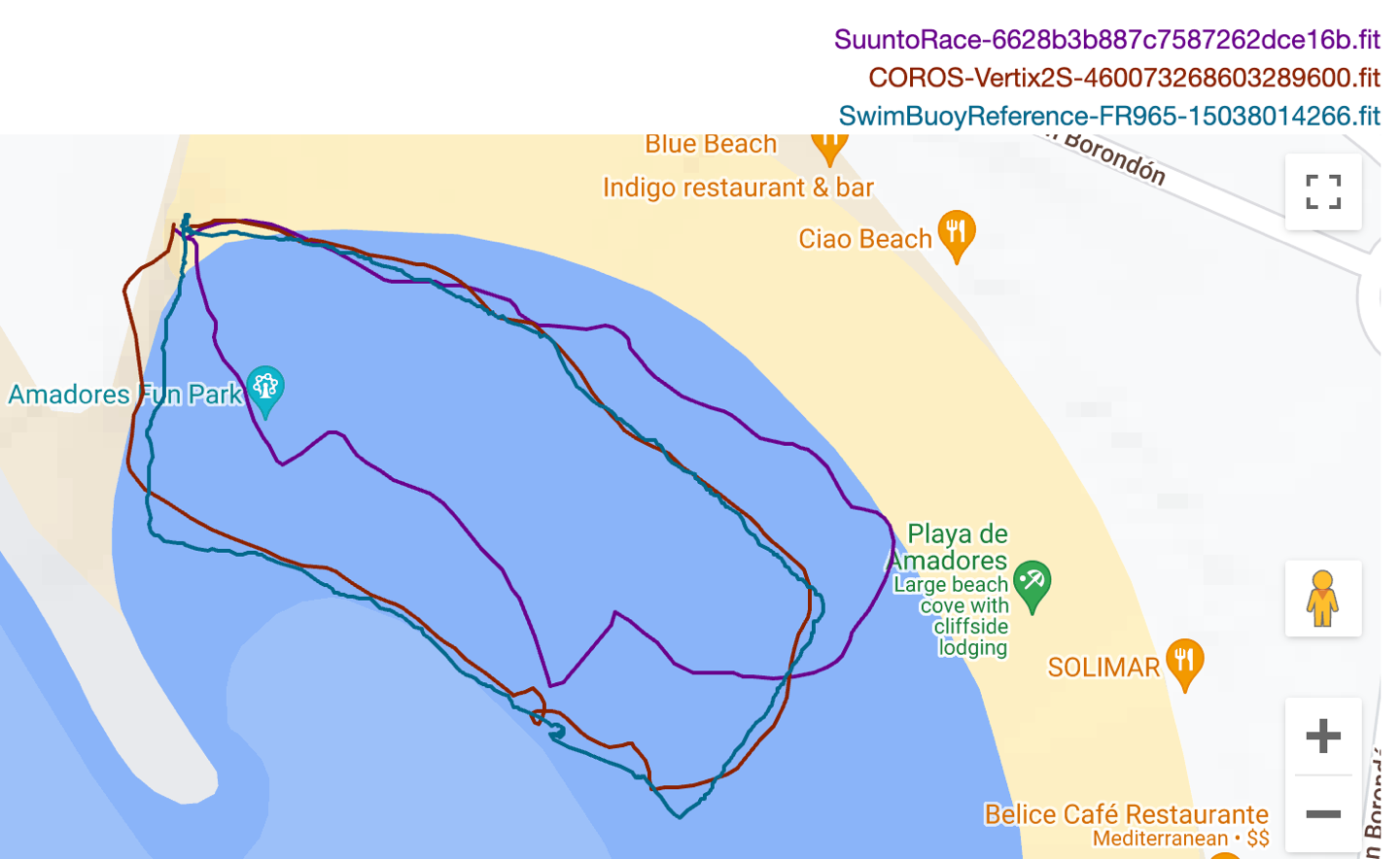
Still, the good news is that as long as you aren’t swimming with the COROS Vertix 2S, then the GPS antenna changes are quite notable compared to the original Vertix 2S. As I and many other reviewers saw with the original Vertix 2, the GPS performance was ‘meh’ at best. Now, it’s where I’d expect it to be for a flagship GPS watch.
Wrap-Up:
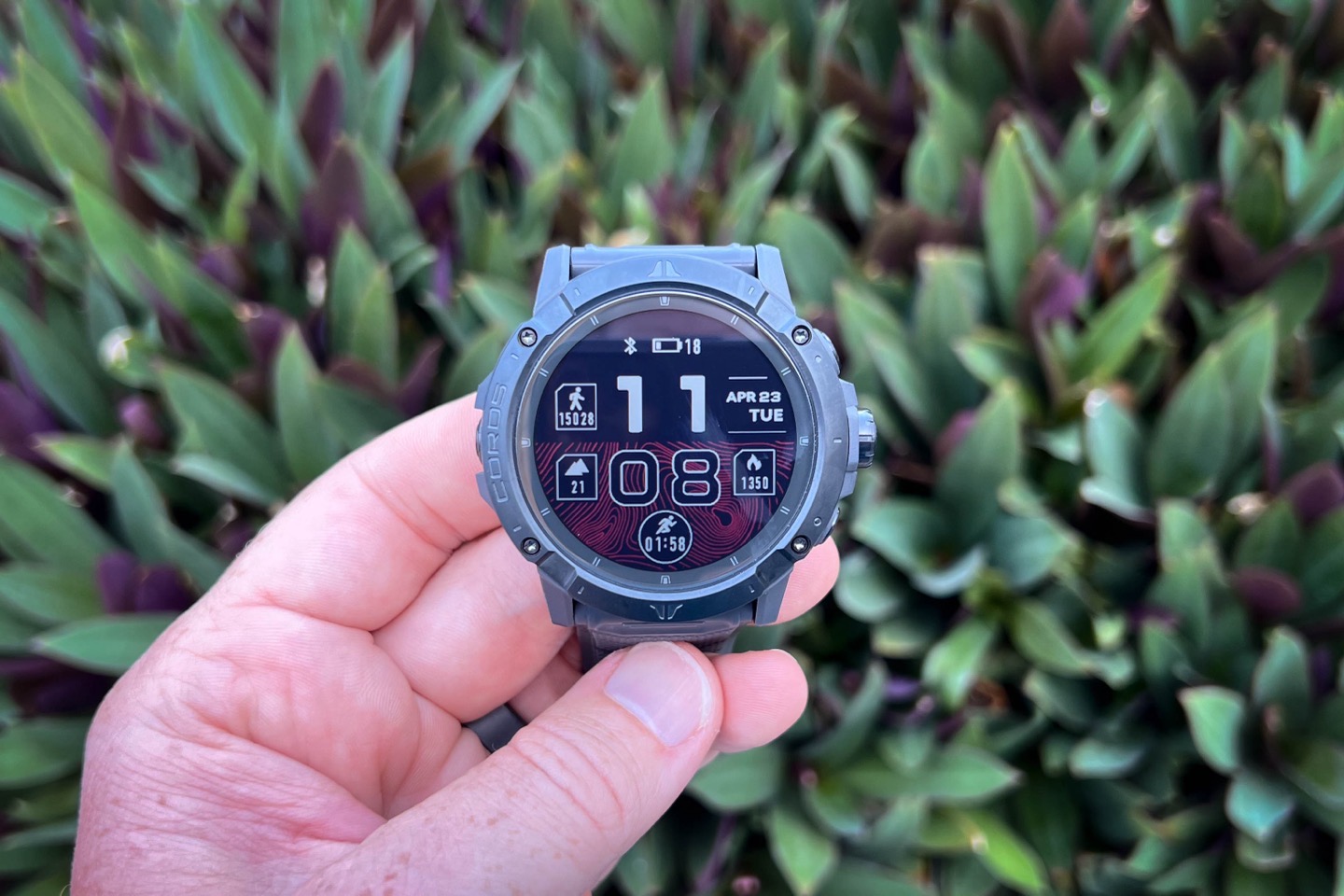
So, where do we stand? Well, this is unquestionably the best COROS watch to date. But, as I always say when new flagships are announced – that’s kinda the point. Anything else is a failure. The good news for COROS here is that this unit is largely bug-free. Unlike what I see with the Polar Grit X2 Pro, which is still working through teething pains, the COROS unit seems pretty darn stable to me. COROS does tend to do a good job at not regressing with each release, and are seemingly willing to wait it out till it’s largely stable. Unrelatedly, I do really like their inclusion of both band/strap types in each box – that’s a nice touch.
From an accuracy standpoint, the optical HR sensor is improved over the existing Vertix 2. But it’s definitely not industry-leading yet. It’s kinda just middle of the pack meh, which is what I saw on the Pace 3 when it came out last fall and shares the same sensor. Sometimes it’s on-point, other times it makes easy mistakes, yet other times it gets the hard part right. From a GPS standpoint, this too does appear slightly improved. On land, it’s tracking well, though still not quite as good as Garmin’s latest-gen units, multiband or not. Likewise, Suunto edges it out too. It’s roughly on par with Polar’s Grit X2 Pro units. For openwater swimming, as I noted, it continues to have troubles there. COROS just needs to make more of their dev team swim, as this has been a multi-year issue. Ultimately, COROS is doing most of the right things here.
The biggest thorn in their side here is the same thorn in the side of Polar: Which is the Fenix 7 series priced most days at $549-$599, and $599 includes sapphire & multi-band. That’s $100 cheaper, and by COROS’s own admission, has far more features than COROS. And ultimately, better accuracy. It’s why Suunto decided to go for the jugular with their $449 approach with the Suunto Race, a tactic that I think is definitely paying dividends. Mind you, this is the same challenge that COROS had with the Vertix 2, and ultimately had to lower the price to account for Garmin’s pressure. Garmin’s recently increased pricing pressure is going to continue to cause headaches for both COROS & Polar’s flagship watches. Whereas inversely, COROS’s well-priced Pace 3 continues to cause headaches for…well…Garmin and basically everyone else.
As for upgrading from an existing Vertix 2? Probably not much of a reason. But if you’ve got a Vertix 1 or APEX series, this is definitely a solid upgrade. With that, thanks for reading!
Found This Post Useful? Support The Site!
Hopefully you found this review/post useful. At the end of the day, I’m an athlete just like you looking for the most detail possible on a new purchase – so my review is written from the standpoint of how I used the device. The reviews generally take a lot of hours to put together, so it’s a fair bit of work (and labor of love). As you probably noticed by looking below, I also take time to answer all the questions posted in the comments – and there’s quite a bit of detail in there as well.
If you're shopping for the COROS Vertix 2S or any other accessory items, please consider using the affiliate links below! As an Amazon Associate I earn from qualifying purchases. It doesn’t cost you anything extra, but your purchases help support this website a lot.
And finally, here’s a handy list of accessories that work well with this unit (and some that I showed in the review). Given the unit pairs with ANT+ & Bluetooth Smart sensors, you can use just about anything though.
And of course – you can always sign-up to be a DCR Supporter! That gets you an ad-free DCR, access to the DCR Quarantine Corner video series packed with behind the scenes tidbits...and it also makes you awesome. And being awesome is what it’s all about!
Thanks for reading! And as always, feel free to post comments or questions in the comments section below, I’ll be happy to try and answer them as quickly as possible. And lastly, if you felt this review was useful – I always appreciate feedback in the comments below. Thanks!




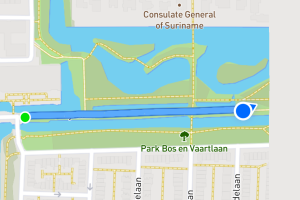
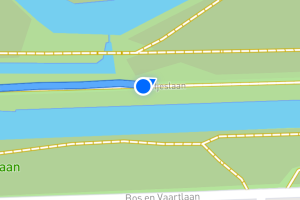
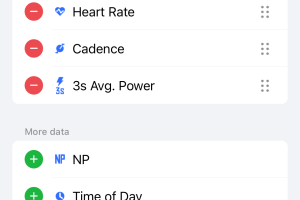
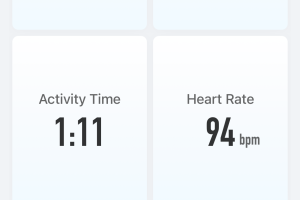
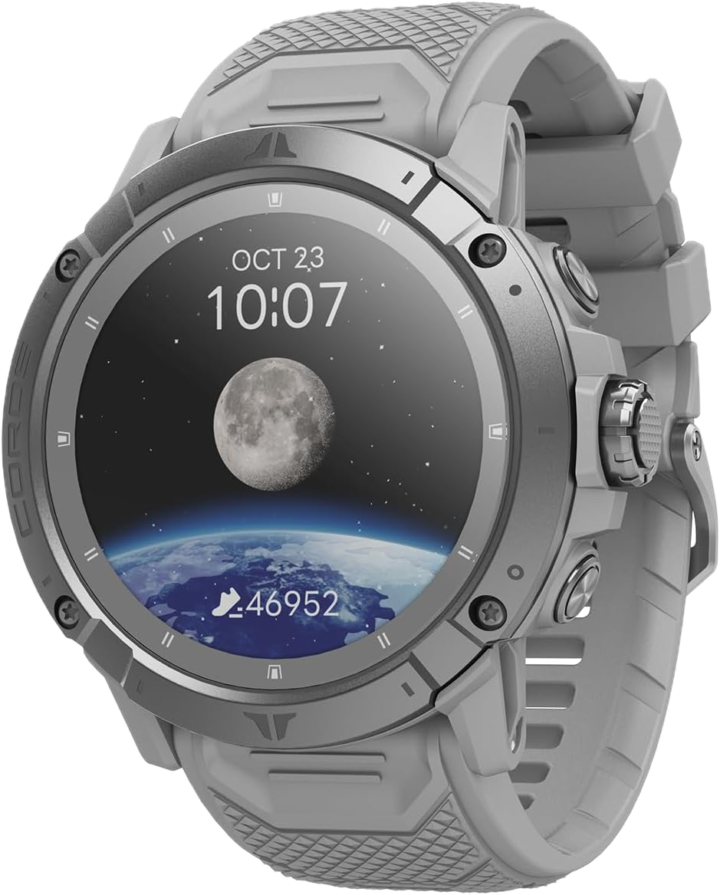
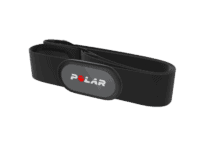
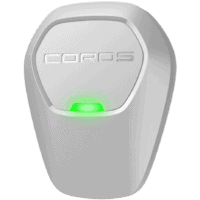
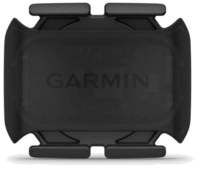

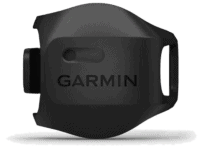






















Good review, thanks.
One query on the training load item – I picked up a Pace 3 recently and looking at the training load screen myself. My only thought is that perhaps the weekly training load it estimates is based on what you’ve done previously and it then gives you a goal to hit for the week. I.e. the screen gives you a minimum and maximum threshold of where you should be. this only works if Coros is actually doing what I think – basing the training load for the week off previous effort.. Is this the case?
So there’s two parts to it.
The first part is the factual load (on the load screen): What have you done. This is where my main beef is, because it’s factually resetting each Monday at 00:00. As such, if you did a hard/long run on Sunday night, that load is magically gone. Whereas other companies properly decay the load and show you the impact of that, at any point in time.
The next piece is the suggested load. I’m fine with this. This is basically just showing you historical load norms for you, based on your past data. You’ll see this at the top of the load page, as well as on the next page around intensity levels. That next page I’m also fine with, as that’s doing pretty much the exact same thing as Polar & Garmin.
Thanks for reply. I actually don’t mind if the counter resets to zero on a Monday morning, so long as the estimated training load for the week actually accounts for the effort I’ve completed in the previous days/weeks. I use Recovery Status (e.g. “24 hours to full recovery”) as the guide for what I should be planning in. Of course, I’ve never had a Garmin previously so don’t have any prior bias to fall back on :)
Great reviews as always on your site!
(an aside: your product comparison page doesn’t have the Apple Watch Ultra 2 and some other models showing – I was trying to use it before going ahead with the watch I picked).
I was looking for a new watch recently and waited for the new Coros and Polar watches and reviews. Since the Polar Grit X2 Pro ist not worth 750€ and buggy, i was hoping Coros would deliver something much better. The watch maybe good and i would be interested, but i got a new Garmin Epix 2 (non Pro) Sapphire for 599€ from a retailer. And that is pretty much all you need to know about where Polar and Coros are standing right now.
Might want to throw the price in the Intro sections.
I had been looking forward to the Grit X2 review in the hopes that Polar had sorted out their accuracy issues, but pulled the trigger last week on the Suunto Race. Since I always wear a H10 for running (basically my only activity I track) I was OK with it’s less than perfect oHR.
great review.
typo under non-routable maps description “it just knows **your** on the breadcrumb track.”
right now- best full featured watch out there…. Forerunner 965. Unless you need super long battery life.
This seems cool but not a great leap forward or anything. I’m a bit surprised that Coros has not released an amoled version of the Vertix and Apex 2 pro.
It’s a “tough compare” with a fenix 7 with promotional pricing, but also that’s not quite the same thing. The fenix 7 is more in the size class of an apex 2 pro.
It’s more directly comparable to an enduro 2 or a fenix 7X sapphire solar or fenix 7X pro sapphire solar. Those are $1000. (Why does Garmin sell the fenix 7X sapphire solar and enduro 2 at the same price? This makes no sense.)
COROS has hinted at AMOLED through various product surveys to users. Undoubtedly it’s on the docket, just a question of which watch they decide to release it with. At this point, their next watch would near have to be AMOLED. Given the 2S came out, it’s clearly not going to be another MIP Vertix anytime soon. And since the Pace 3 came out last fall, it’s not going to be another MIP Pace anytime soon. I’d guess the next most logical candidate is the APEX series, as that’s “slightly” older (but only a year old). Of course, they could just pull a Garmin and spin off a new AMOLED product line, but then they get themselves into the same long-term pickle as Garmin on Fenix vs Epix. Since COROS has built-up brand awareness with Vertix, I’m not sure jumping (model brand name) ship to something else makes a ton of sense for the company given their size.
Currently, the Fenix 7X Solar is $699, and has been that way for a while. If you add the Sapphire bits (looking at it from a materials standpoint, then the price varies all over the place, but tops out at $899). And this sets aside the even lower pricing over the last few months. From a GPS accuracy standpoint, it’s well established that Garmin’s non-multiband Fenix 7 watches are equal to what COROS has to date. Heck, I’d argue there’s very few scenarios with current firmware where even Garmin’s own multiband units are beating the non-multiband units. It’s almost always a wash.
As for Enduro 2 vs 7X pricing…sigh, I think Garmin basically got themselves into that pickle over time. It’ll be really interesting to see how they get themselves out of that model branding pickle going forward.
Oh sorry. I thought the fenix 7X sapphire was still $1000 but anyway, the 52mm MIP versions are over-represented:
– enduro 2
– fennix 7X sapphire
– fenix 7X pro sapphire
These don’t all need to exist. In fact, the 7X Pro is a miss. It should, IMO, be the union of the enduro 2 and the new HR sensor. They could have called it fenix 7x Pro or Enduro 2 pro or fenix 7X enduro pro. But just have one.
It seems dumb to have 3 so poorly differentiated SKUs in production.
Similarly this Vertix 2S seems like fixing issues from the last generation but seems less compelling against the Suunto Race and Epix 2 52mm which have a lot of range AND amoled.
“They could have called it….fenix 7X enduro pro.”
Combining all the names into one?
Wahoo/Zwift & Years-past Suunto have entered the chat.
Don’t forget the Tactix 7….in MIP and AMOLED
Hi here in France
F7X spphire solar — 540€
F7X Pro solar — 799€
Coros 2S — 699€
So this is not a smaller version of the Vertix 2? I’ve been in the Garmin camp too long lol.
With Garmin absolutely butchering their Connect Web home page and the app, I’m even looking at Coros, a brand I used to despise.
In the recent 3.4.6 Beta, the ability to turn off the Stress for activities is present. From the main “progress” page in the Coros app, tap into Stress, scroll down to “activity stress”. Toggling this on or off will either enable or disable stress tracking during activities.
After the switch to the terrible new Garmin Connect Home screen I think a lot of us are looking at other options for our next watch if Garmin sticks with its new setup. Good to know there’s a few viable options out there in this price range.
Polar and Coros have now dropped their battery/endurance beast in the lineup. Any chance you have a range for when Garmin will drop the Enduro 3?
I am frustrated with the inconsistency of garmin HR in latest few versions of EPIX 2, forced to use a chest strap, which I hate, want to switch to Corus, but I am wondering if I can upload the Corus activities to GC (as I use the Garmin Edge for biking.
Is it possible to boradcast the HR to the edge wth Corus?
Yes, you can broadcast the COROS HR across Bluetooth Smart to various 3rd party apps/devices.
You cannot upload workouts from COROS to Garmin Connect though (the files), and have it count for various training load metrics.
Great review, as always.
It would be nice, if for every gps watch review you could add a “dedicated line” for chipset brand/model, eg Sony, MediaTek, Airoha, etc.
(instead of general “same exact GPS chipset”).
This helps to see which tribe/group/camp it belongs.
Sadly it’s very challenging, as some companies won’t actually release the chipset names, but rather, we have to figure it out later when people start tearing them apart.
That said, virtually everyone is on Airoha now (which is basically just MediaTek renamed). Sony has fallen out of vogue. And virtually everyone is using the Airoha AG3335M. COROS previously confirmed they’re using the AG3335M for their multiband units. And using process of elimination, it’s actually the only chipset available for most of the other units, in terms of the matrix of features they need within the Airoha lineup.
Thanks a lot for taking the time to answer.
I’ve just happen to read your “Suunto vertical” review few days ago
( link to dcrainmaker.com ),
and I’ve noticed you use the same phrasing – there it’s “the exact same GNSS chipset” (-:
(comparing to Suunto 9) , and I had go to the Suunto 9 review (link to dcrainmaker.com) to see what it was (Sony btw).
Just “nit”.
I know someone who worked on the math of a gps chipset in some other company.
After hearing his explanations of all the complexities involved converting the radio signals to a “location”, it’s a wonder it works… I never complain about gps accuracy again.
Thanks again.
Very informative review, thank you so much!
I am torn whether to switch to V2S from a P3, but I suspect the P3 is on par speaking of GPS accuracy…
Does Coros suffer the same bluetooth headphone issues as Garmin?
I’m ready to sell the Garmin (Fenix 7) because if the airpods get connected to my phone, then that breaks the connection. I usually need to restart the watch and or remove airpods and reconnect them.
I see Garmin has a disclaimer in their tech section ‘You may have difficulty reconnecting to previously paired Bluetooth headphones if you have recently connected them to a phone (or another active audio player)”. Seriously WTF.
Anyway, does Coros suffer the same issues?
Thanks in advance!
Which watch would you say is the most accurate for HR?
Is Vertix 2s compatible with Runn sensor?
HI,
can I use my garmin chest strap with coros vertix S2?
thanks